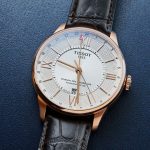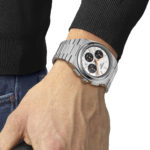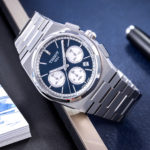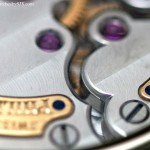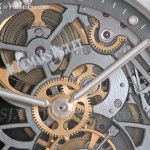Up Close: Tissot PRX Powermatic 80
Affordable and good enough.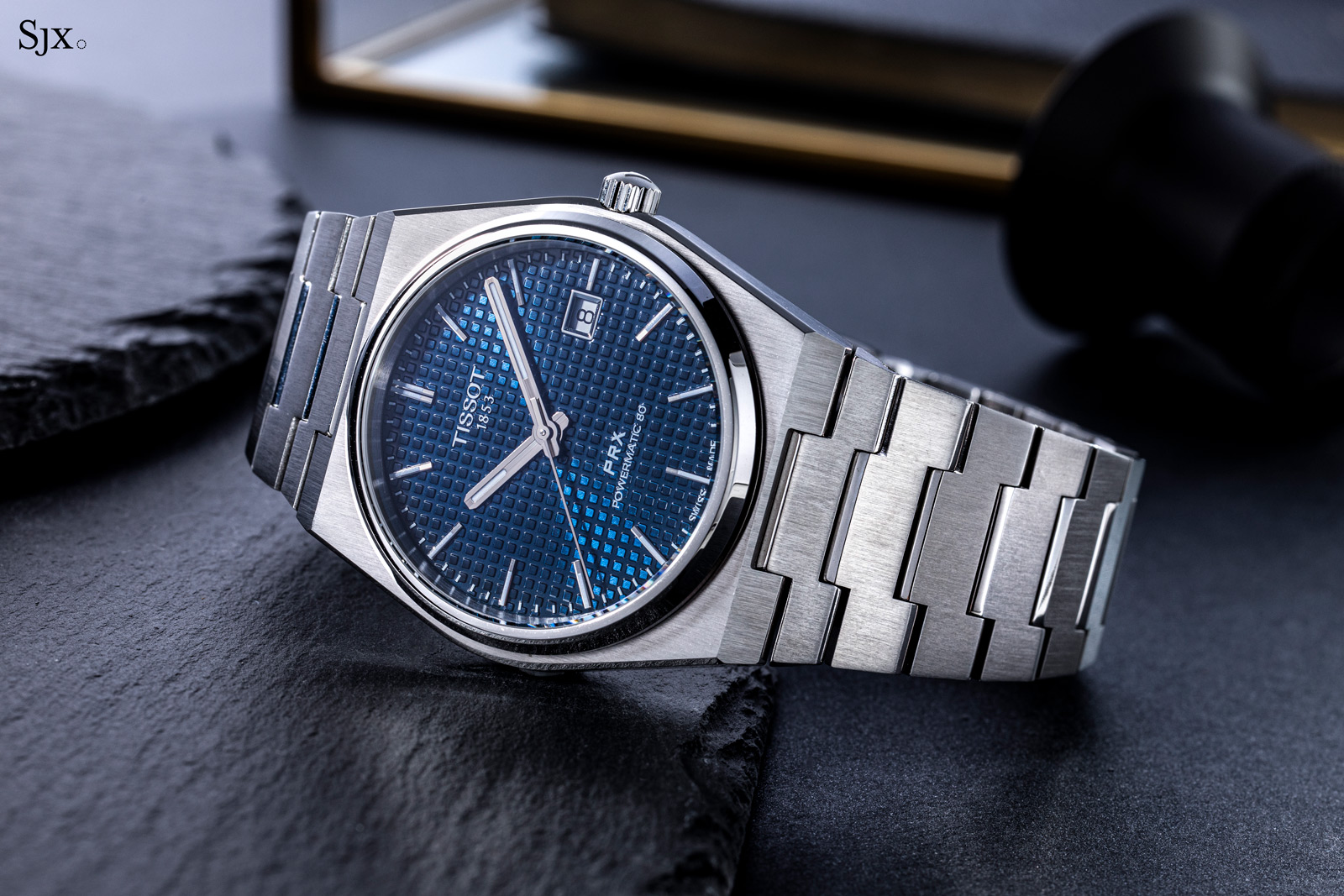
Originally launched with a quartz movement in early 2021, the Tissot PRX really caught on when it got an automatic movement a few months later. Equipped with a cost-efficient yet high tech ETA calibre, the PRX Powermatic 80 costs just US$650 – making it an easily affordable iteration of the integrated-bracelet sports watch.
Initial thoughts
Modelled on the Seastar ref. 40205 launched in 1978 – it’s practically a remake in fact – the PRX Powermatic 80 doesn’t try to do too much. Instead it focuses on doing just a few things right, just enough to look good while maintaining its affordability. Its modest price tag is evident up close, but the PRX still looks good enough on the wrist.
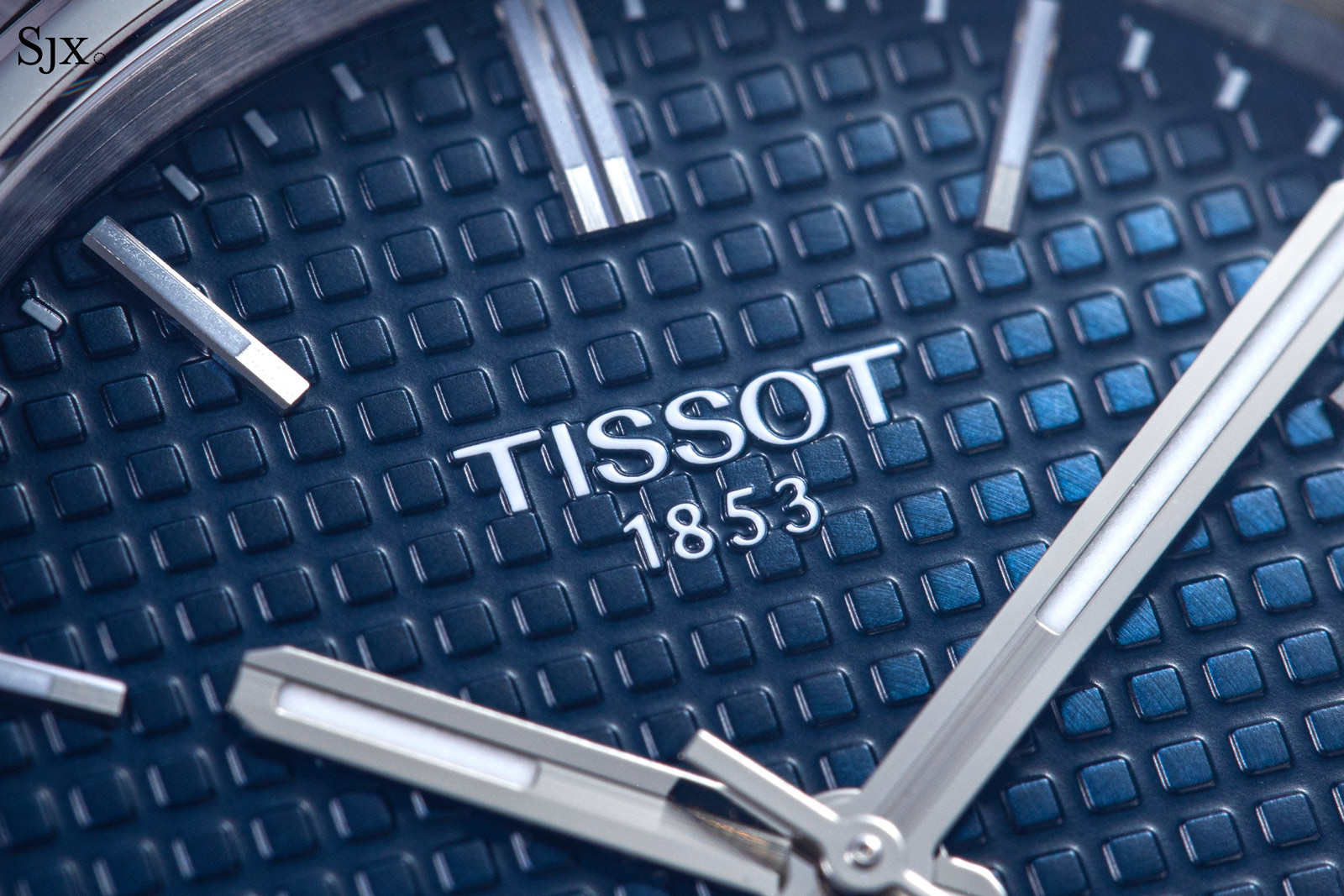
The PRX Powermatic 80 successfully reproduces the feel of the 1978 original. It’s a little bit bigger, but still compact by modern standards. More importantly, the PRX retains the right proportions in terms of case, bracelet, and dial.
One of its best features is its size. At 40 mm wide and 10.9 mm high, the PRX is just right. The case middle is fairly thin and matched with an equally thin bracelet – that has a solid double-fold clasp – giving it a refined feel on the wrist.
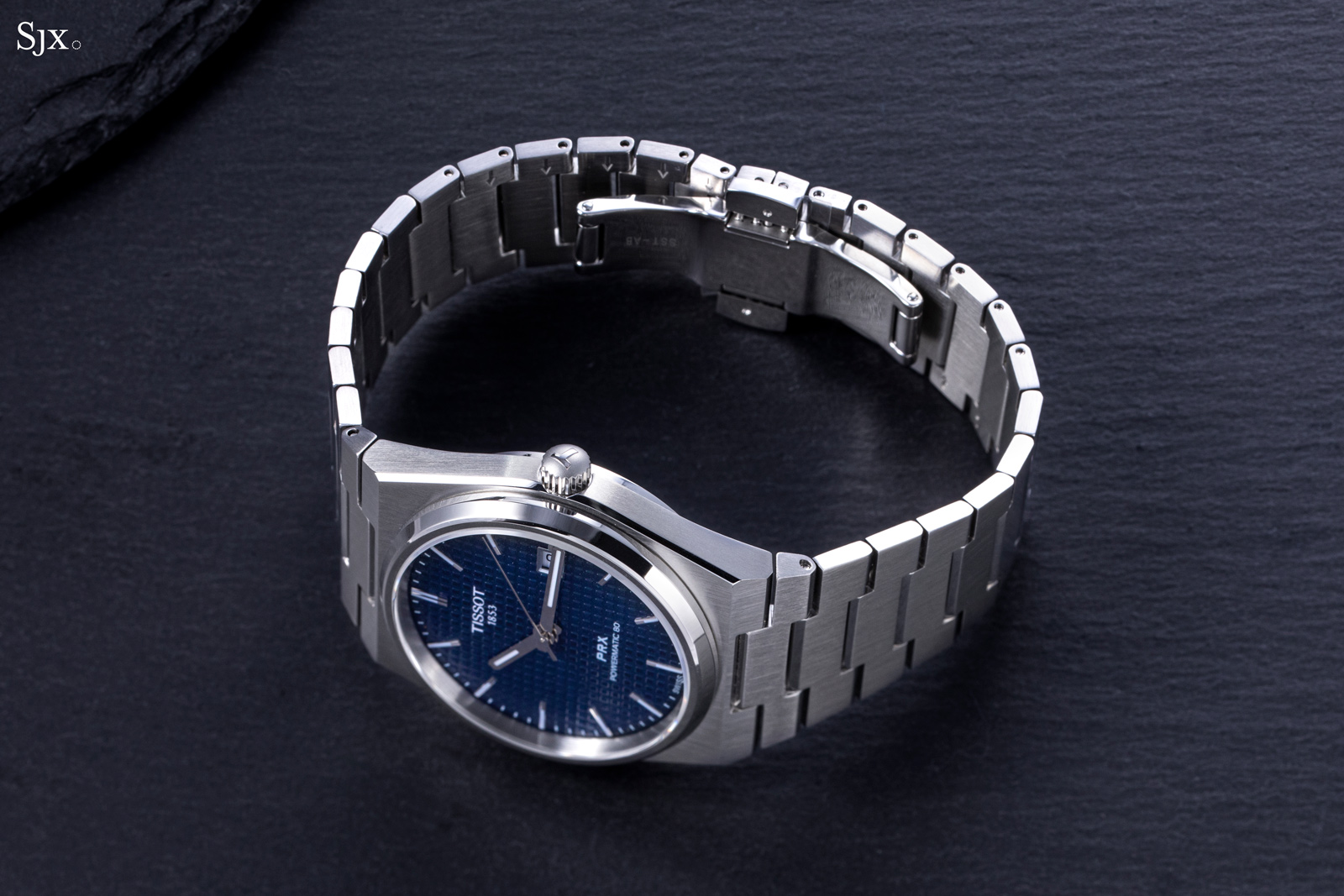
As for the design, it’s a good look – and certainly a popular one today – but derivative. That’s because the 1978 original itself was fairly generic. The 1978 Seastar was just one of many watches that shared a style that was popular in the late 1970s and well into the 1980s. One of the most obvious examples is the Rolex Oysterquartz, and other similar designs were put out by Omega, Longines, and also Seiko with the Seiko 5 ref. 6309-836A that inspired a recent limited edition.
That said, the design isn’t that common today at the price point of the PRX, which makes it unusual and boosts its appeal. Even though it doesn’t cost much, the PRX does well in a just a few areas, like the polished bevel on the outer edge of the case, but enough that it’s attractive.
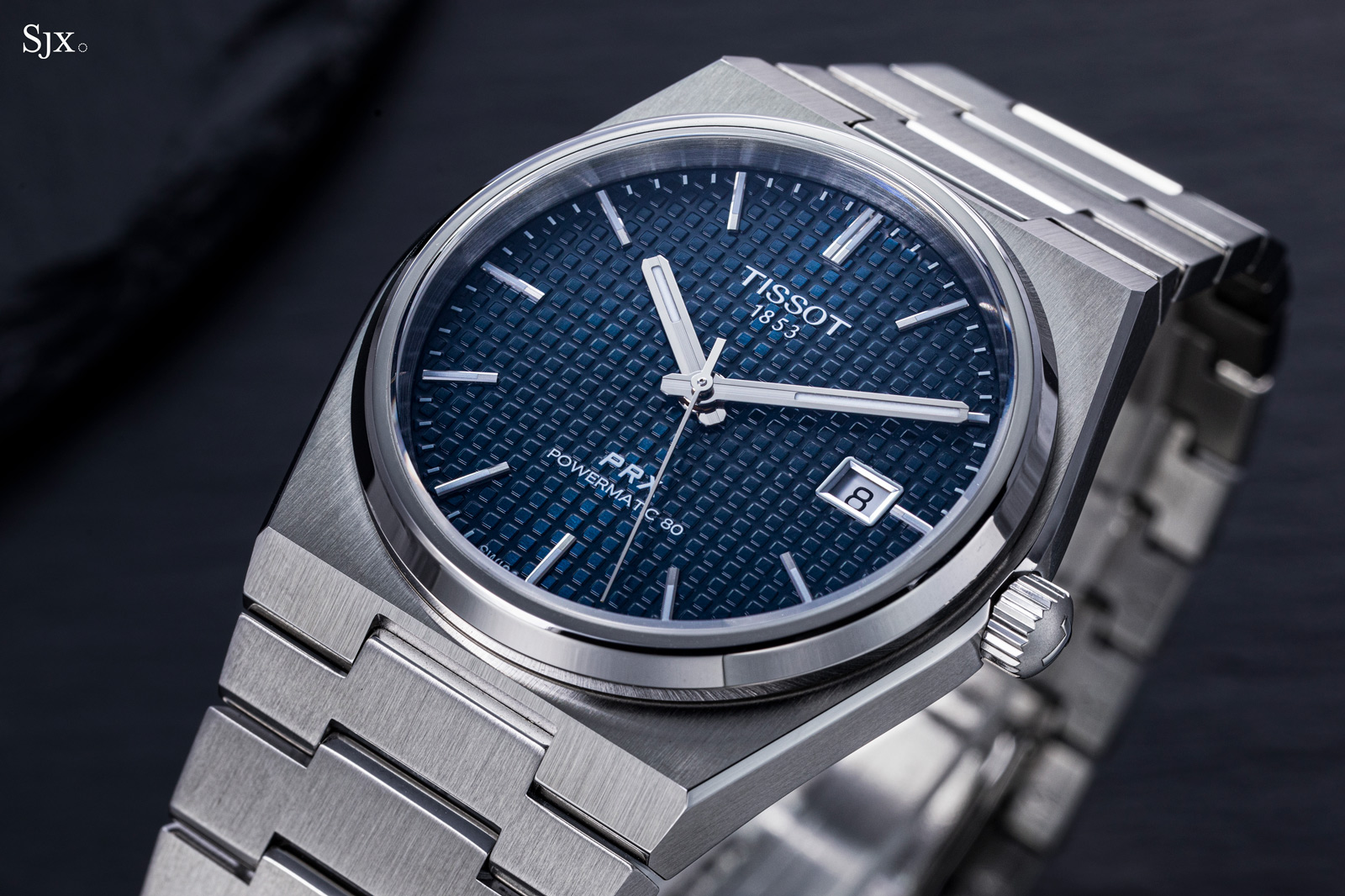
When examined in detail, however, it is clearly a watch that costs what it does. The outer surfaces of the case and bracelet, for instance, are finished better than the inside surfaces. Similarly, from the back it’s not especially attractive, although the movement is a prime specimen of the Swatch Group’s manufacturing prowess.
The movement is a low-cost workhouse movement descended from the ETA 2824, but modified and improved for better performance and easy industrial manufacturing. It’ll will doubtlessly perform well on the wrist – it has a useful 80-hour power reserve and high levels of magnetism resistance – but it’s not much to look at. I would have preferred a solid back.
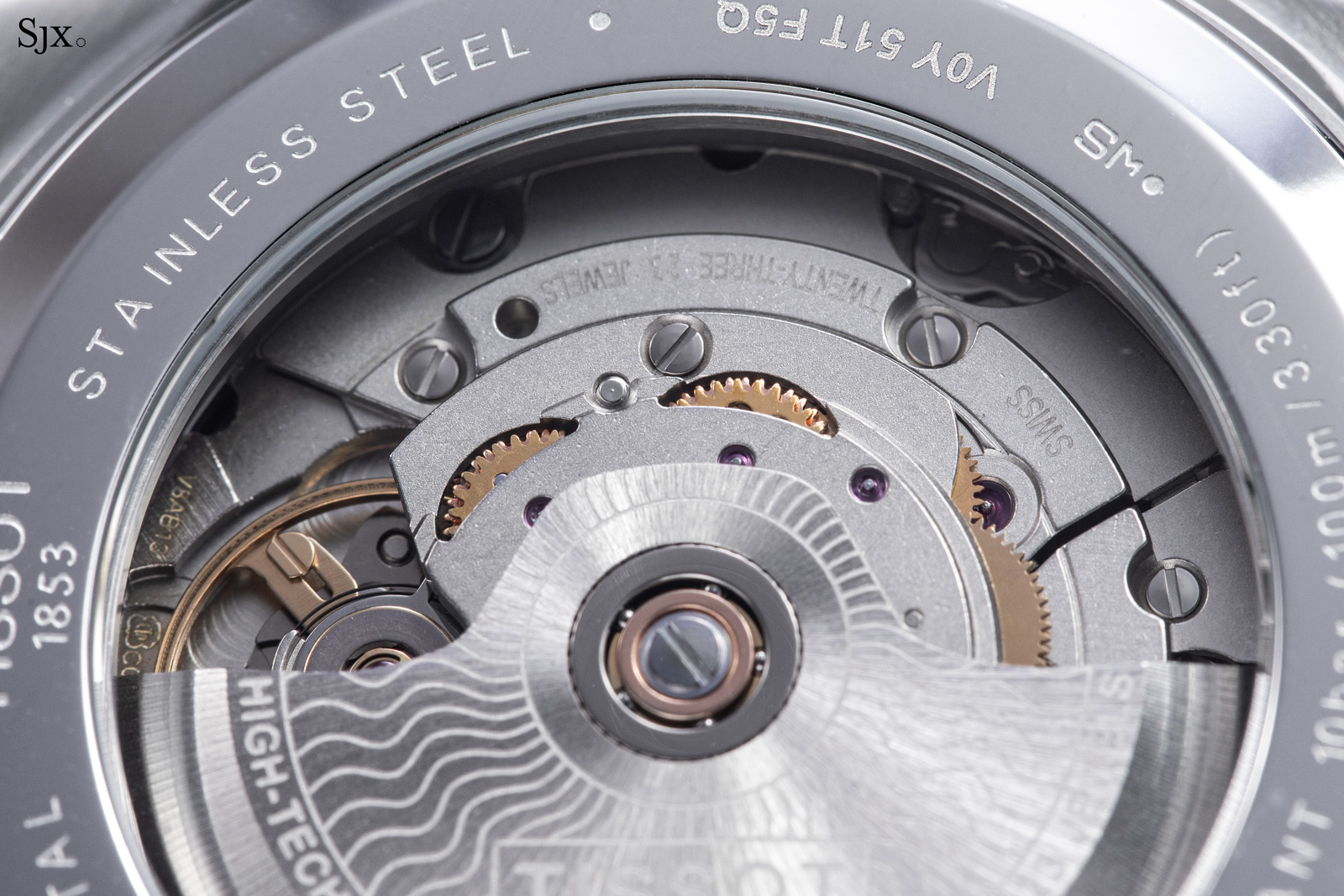
Now offered in three variants, with surely more to come, the PRX looks most modern and sporty in either of the dark dial options. The blue is the most obvious choice for a sports watch – and its finish is more appealing – but the black does have appeal in its restrained colour.
With its retro vibes, the two-tone version looks more like the 1980s original that either of the other two, which might be precisely the point of its appeal.
In all three flavours the PRX Powermatic 80 offers good value for about US$600. It stands out for its design, although the fit and finish are clearly budget minded.
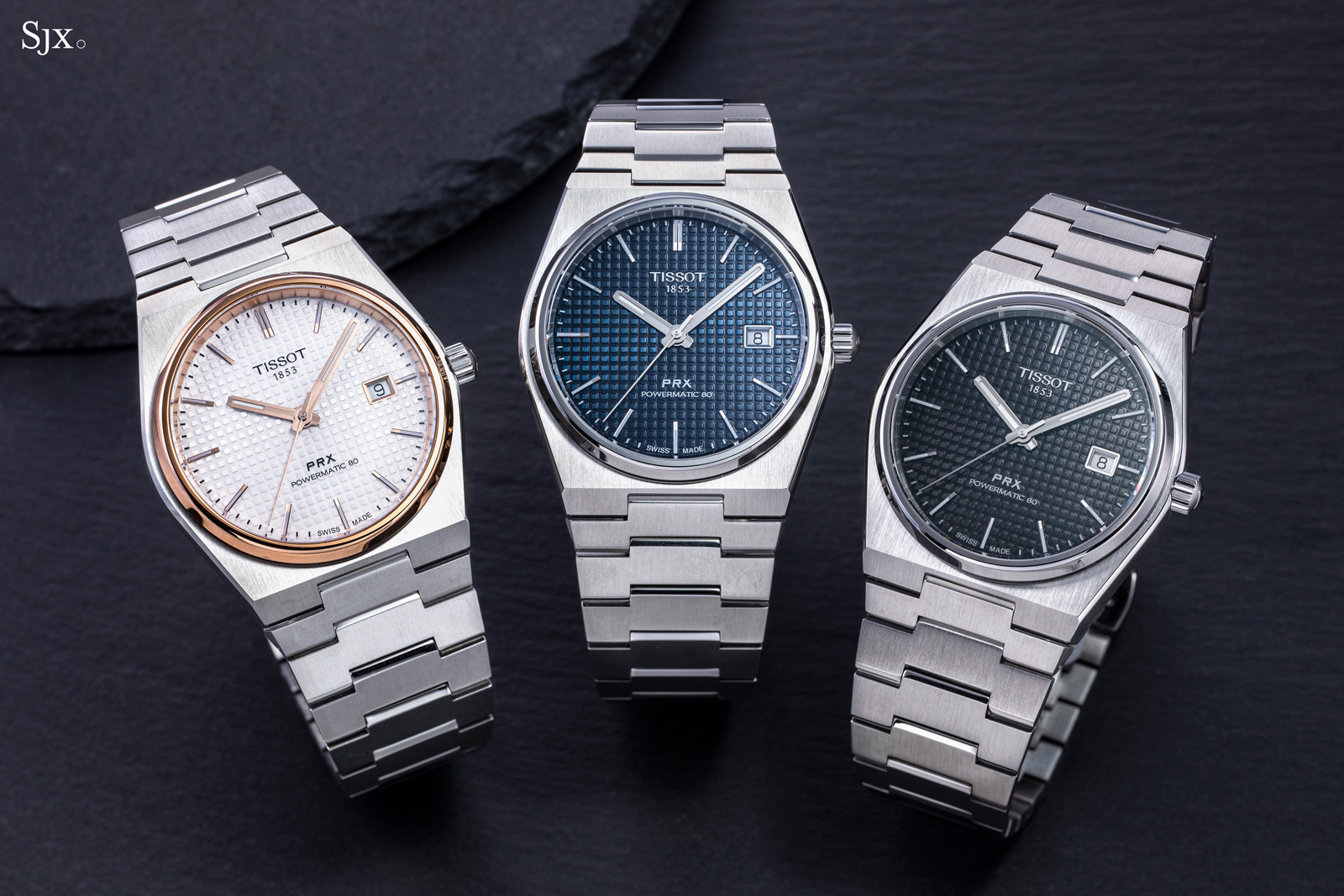
Highly competent
The case is simply constructed with a press-fit back, and the crown isn’t screw down either. Neither is essential to water resistance or standing up to everyday wear, but either would be nice to have. Still, the case lives up to expectations for a sports watch with a water-resistance rating 100 m.
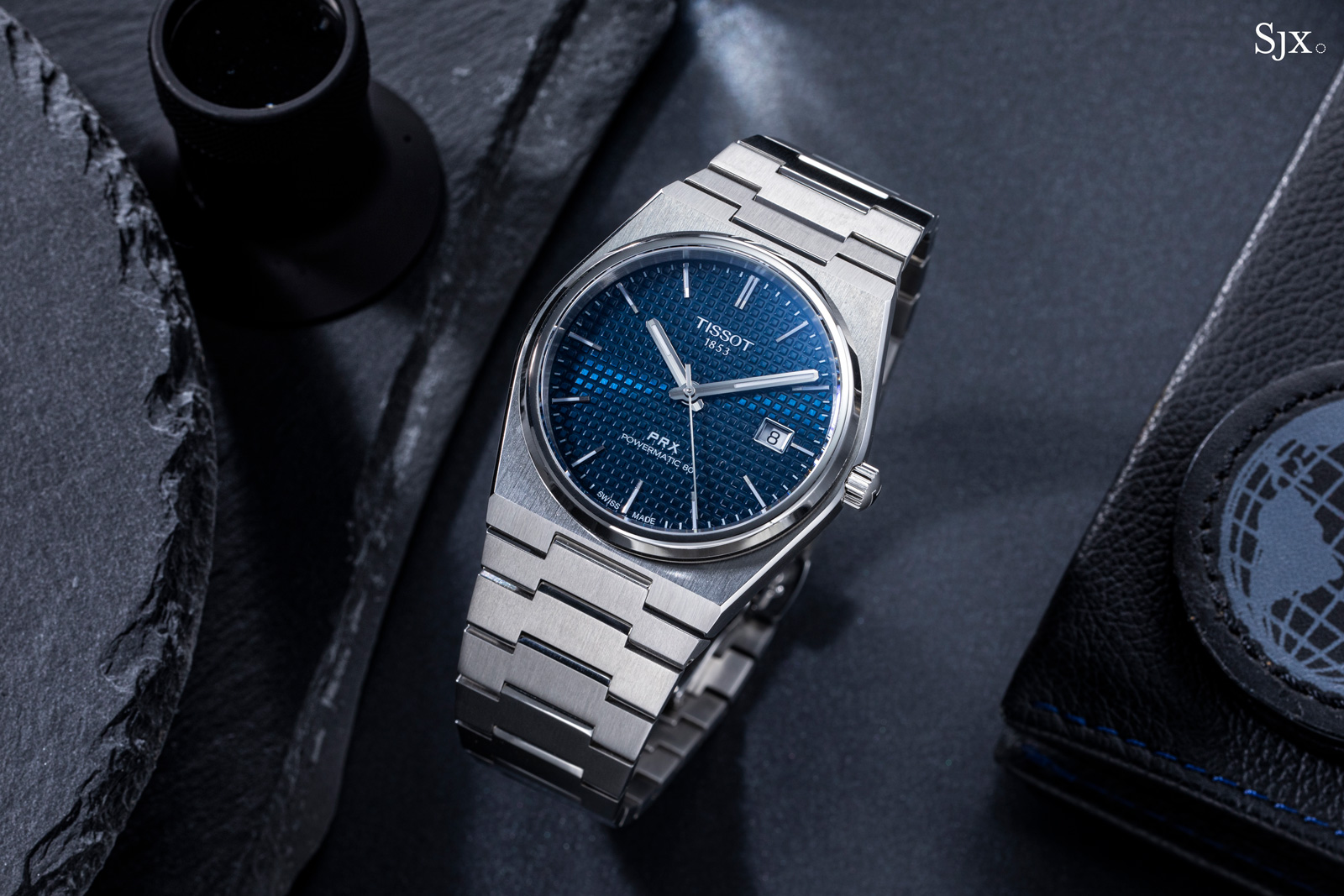
At 10.9 mm high, the case is thin, but seems even thinner because of the narrow case band, while both the bezel and back are tall.
Importantly, it is matched with an equally thin bracelet, which results in good proportions and balance from case to bracelet.
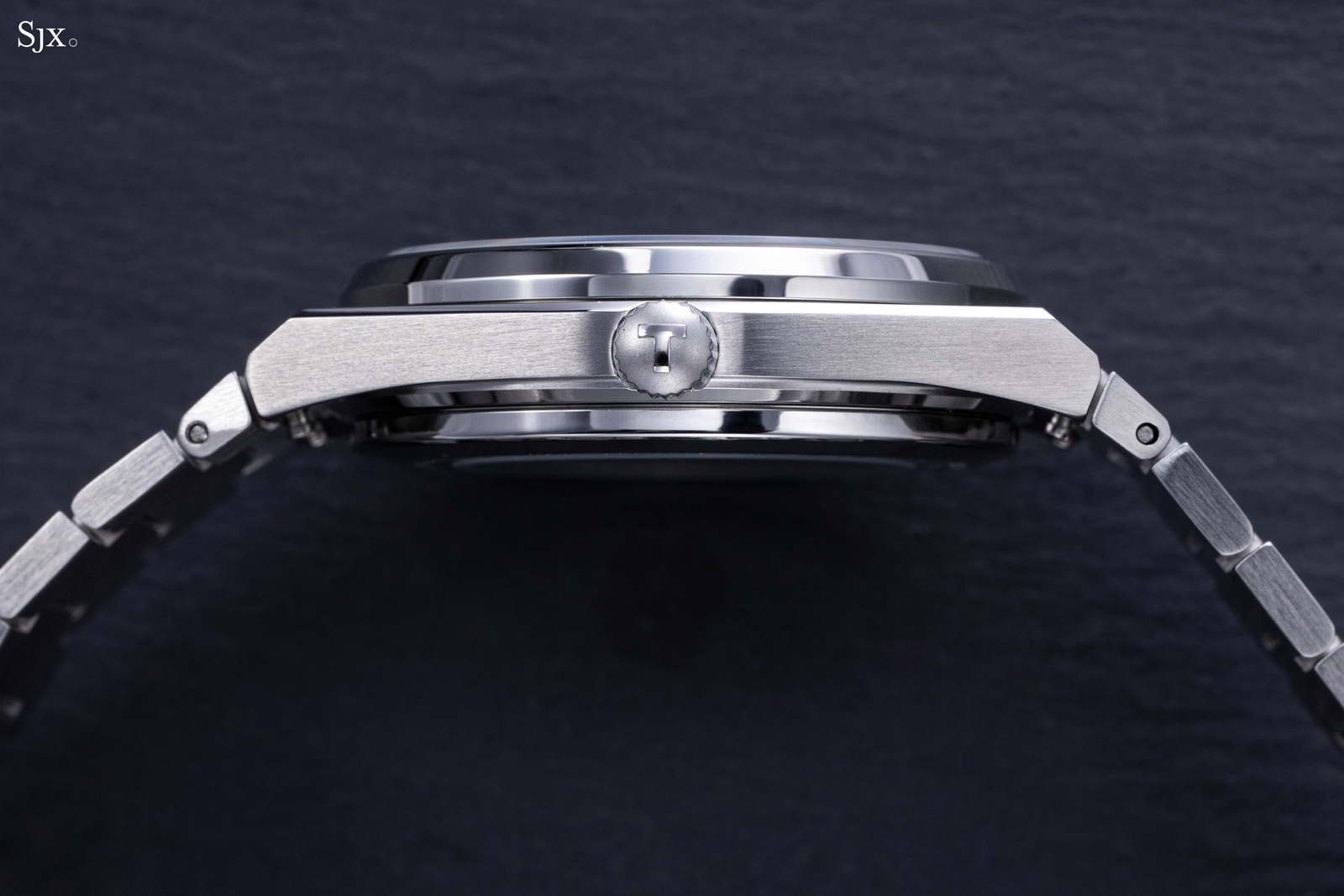
Though the case is exceedingly simple in construction and details, the finishing is done well, especially on a few details that give it a little bit of refinement.
One is the polished bevel along the length of the case, and the other is the edge between the top of the case and the lugs. Both give the case better visual definition, and are also details associated with more expensive watches.
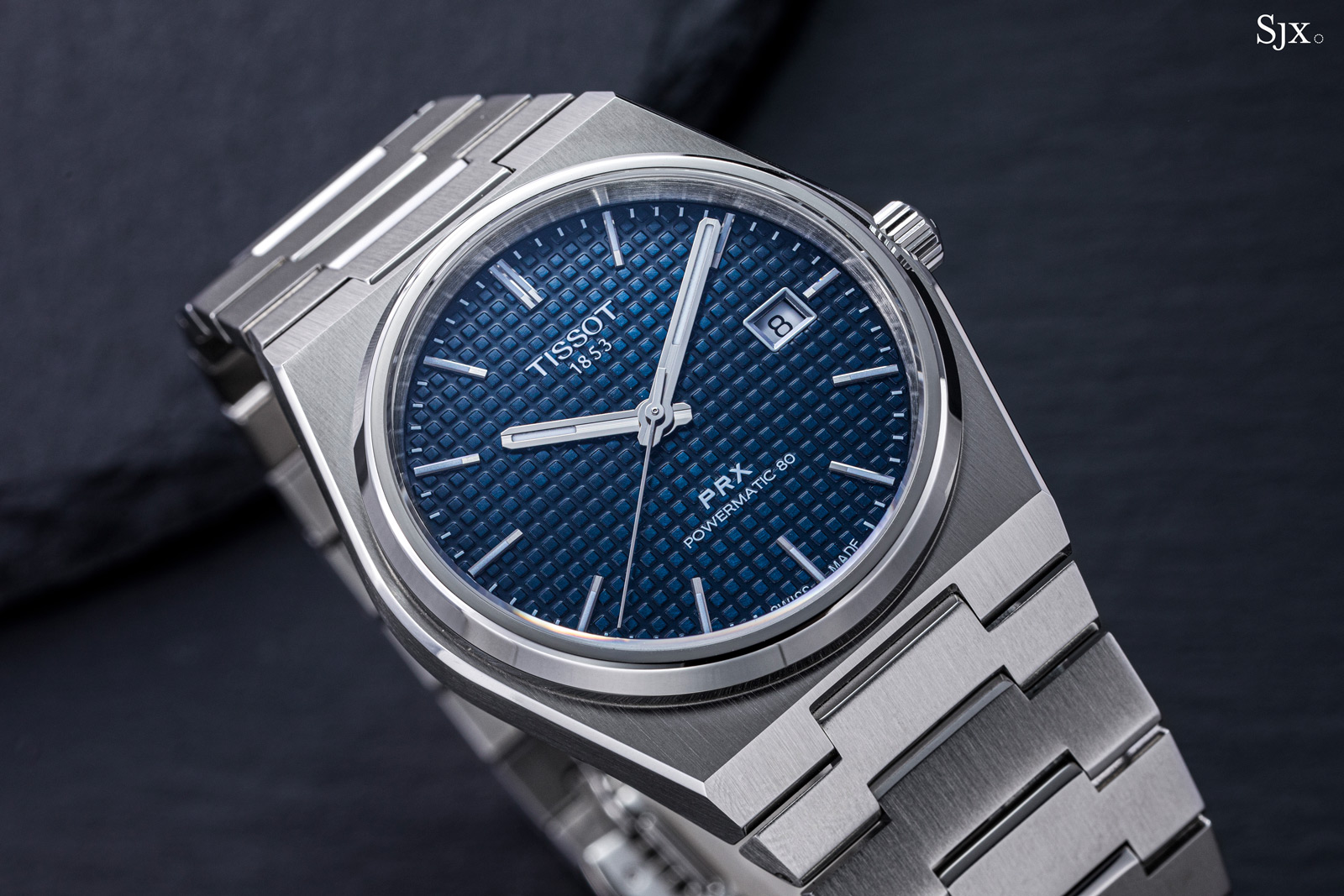
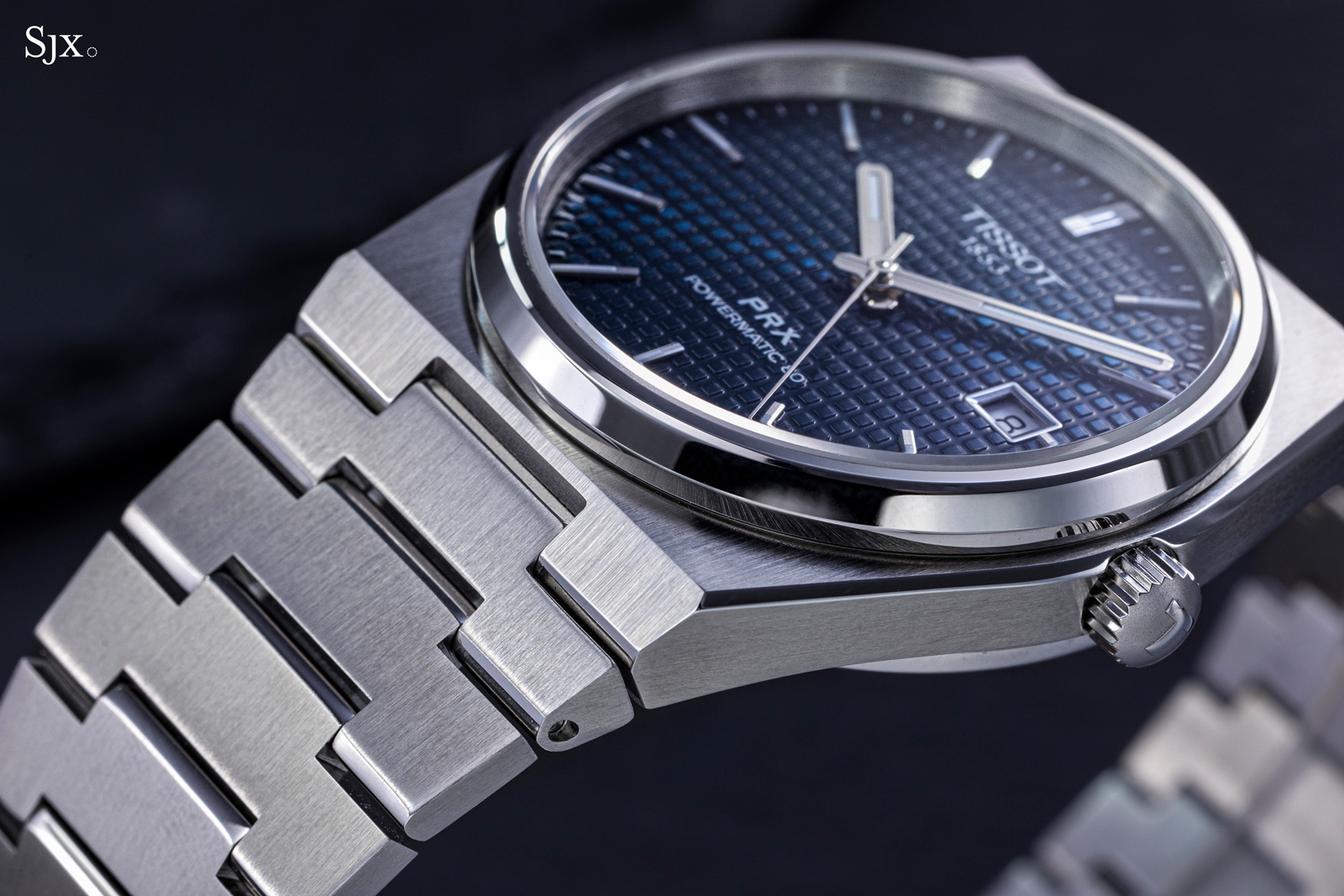
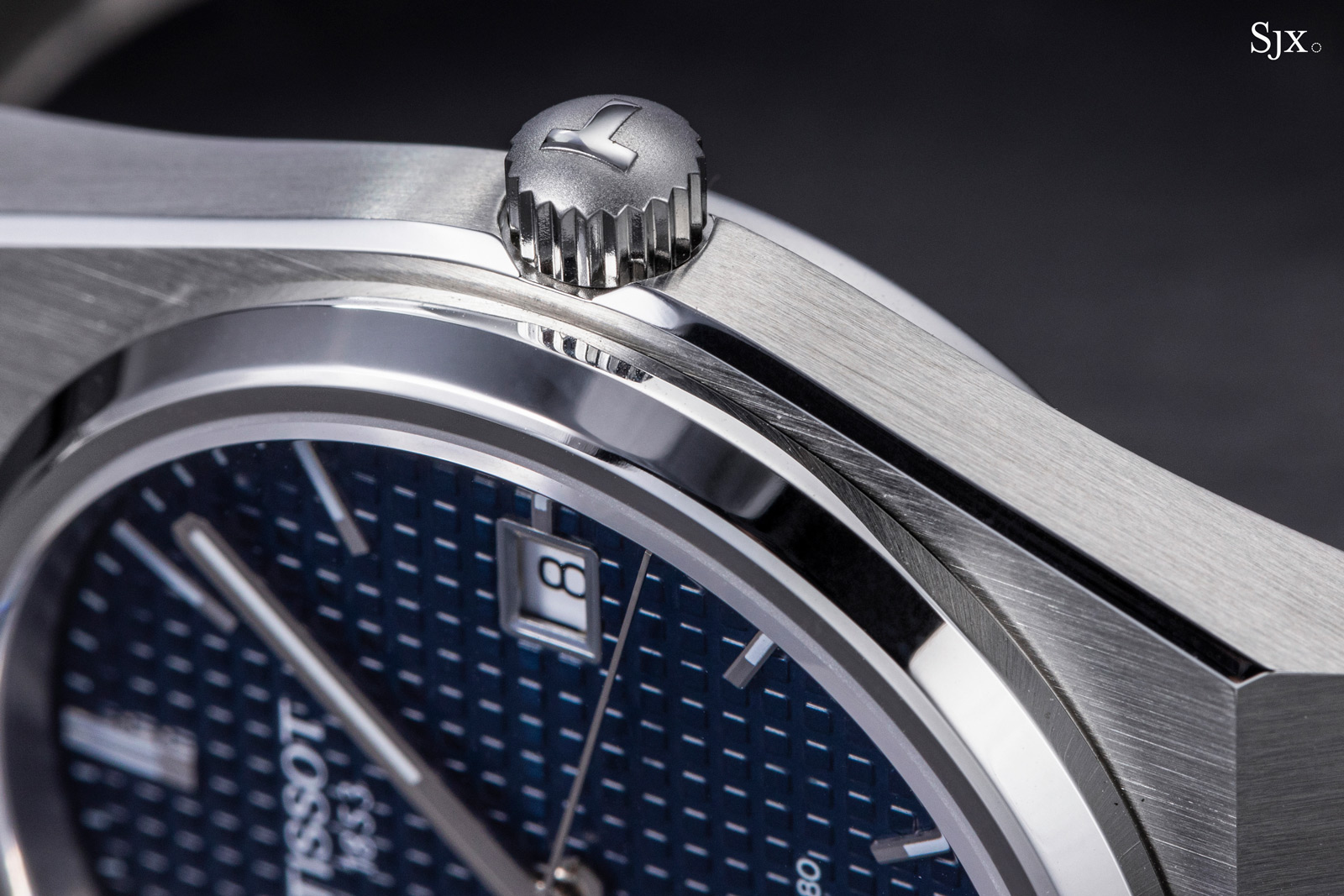
The bracelet is straightforward in style, but comfortable because the links are compact, which makes for a supple feel. And it is equipped with a double-fold, pushbutton clasp that is hidden – a slightly more premium feature that also gives it a seamless appearance.
The limitation, however, with such bracelets is the lack of fine adjustment since lengthening or shortening the bracelet can only be done one link at a time, so an absolutely perfect fit might not be possible for some wrists.
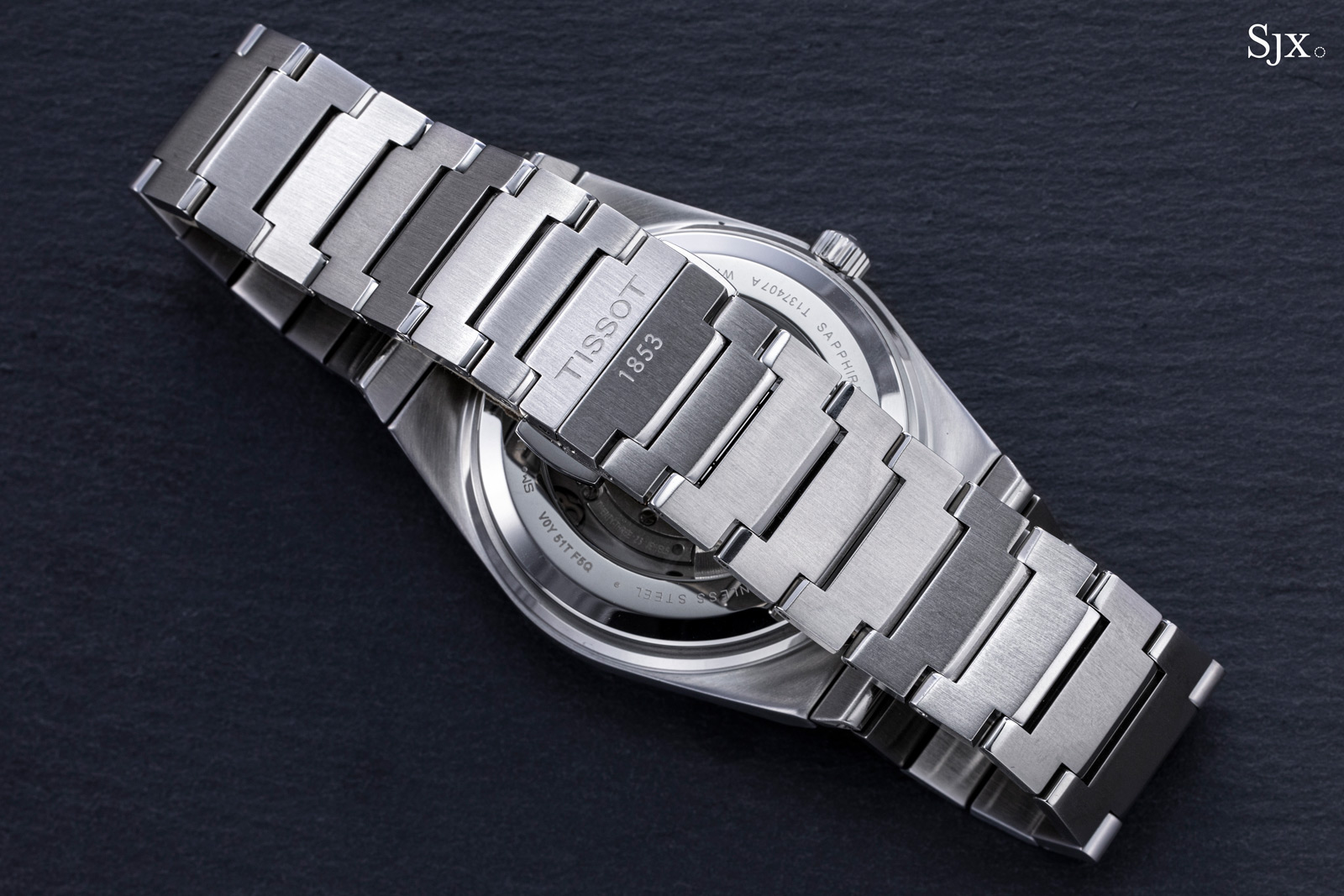
Like the case, the bracelet is neatly finished on the outer faces. The brushing is tidy and even the lateral inner faces of each link are polished. On the inner surfaces the bracelet reveals more rudimentary finishing.
The bracelet is conveniently equipped with quick-release mechanism, twin tabs that retract the spring bar so that the bracelet can be removed. Though useful, the quick-release takes a few tries to release because the tabs are small and sit close to the case.
And Tissot doesn’t offer a strap for the watch yet, so the utility of the quick-release is limited, at least for now.
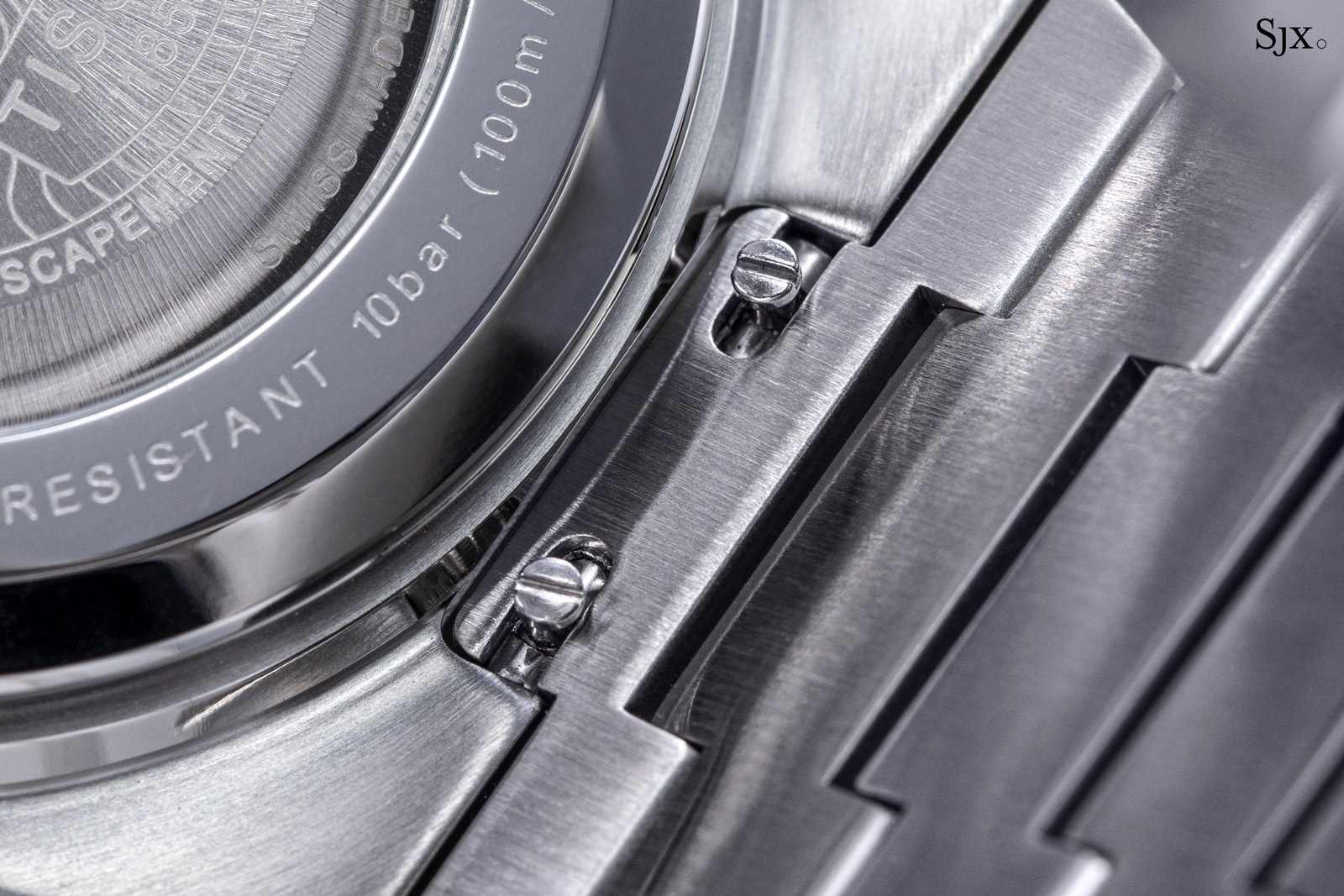
Dial
On the wrist, the chequerboard pattern of the dial is attractive. And it does bring to mind the tapisserie guilloche of the Royal Oak, which is surely a good thing in this case.
Of the three dial colours available, the blue is the most attractive because it’s shaded; the blue is slightly varied in tone across the dial. In contrast, the other two colours seem relatively flat.
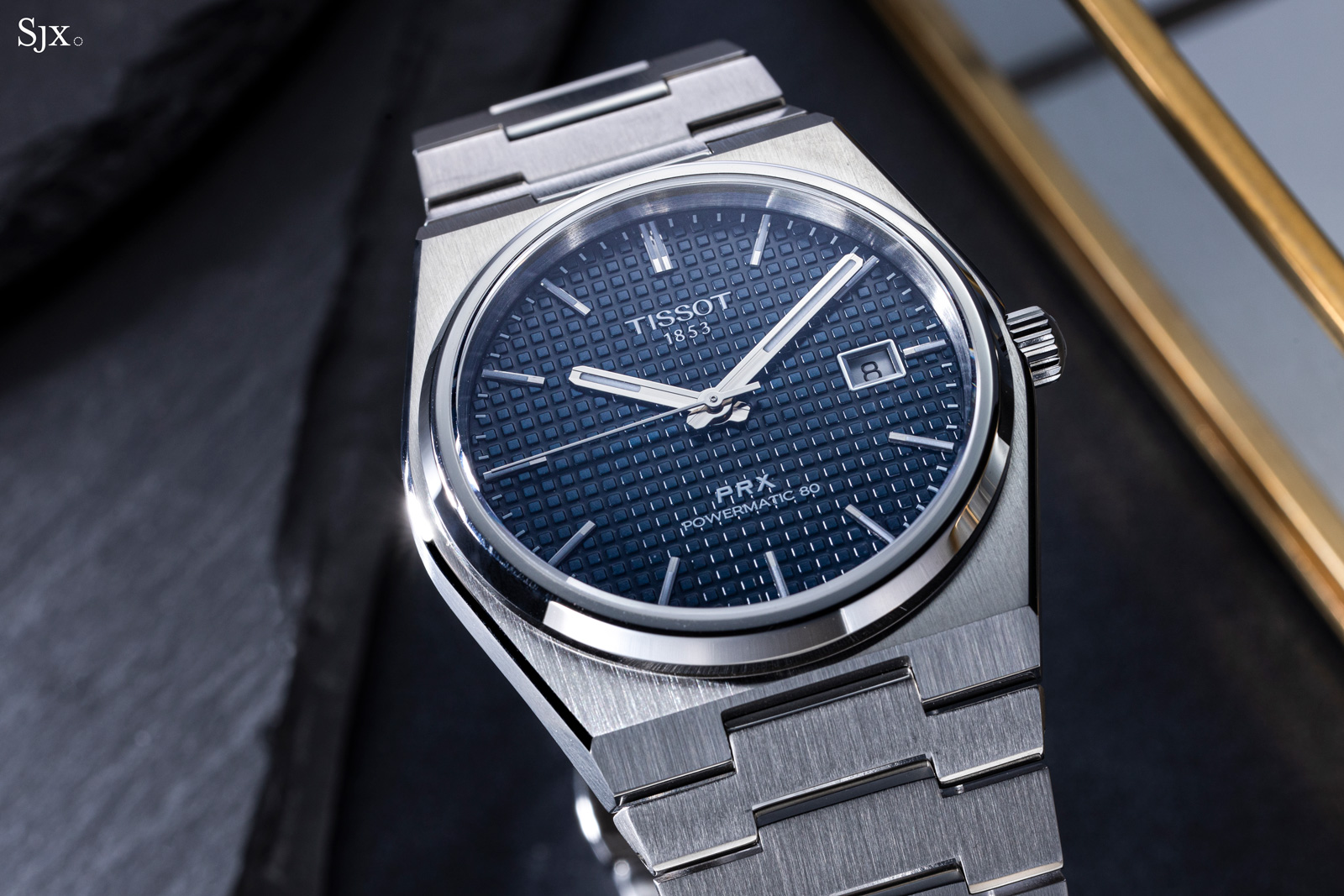
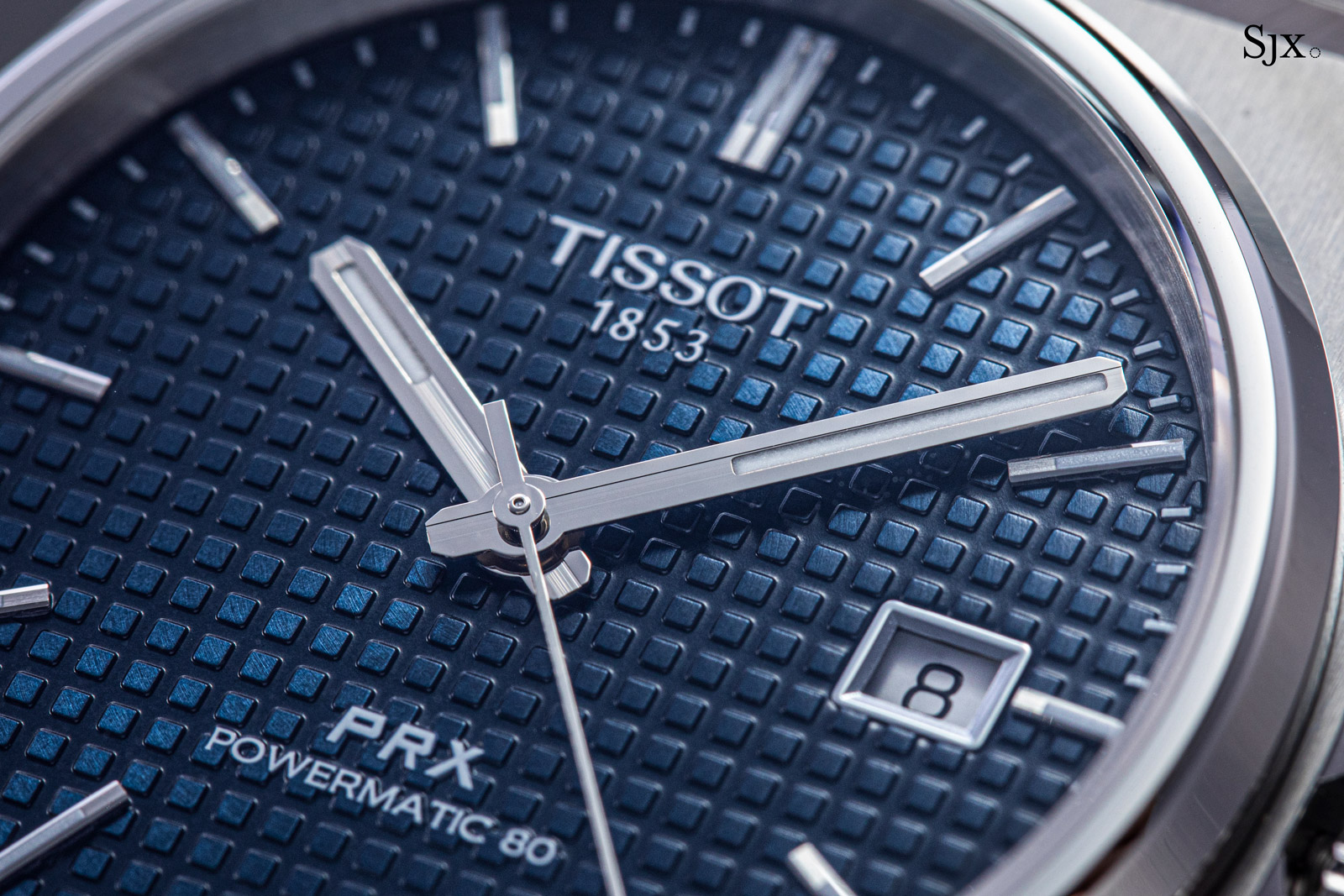
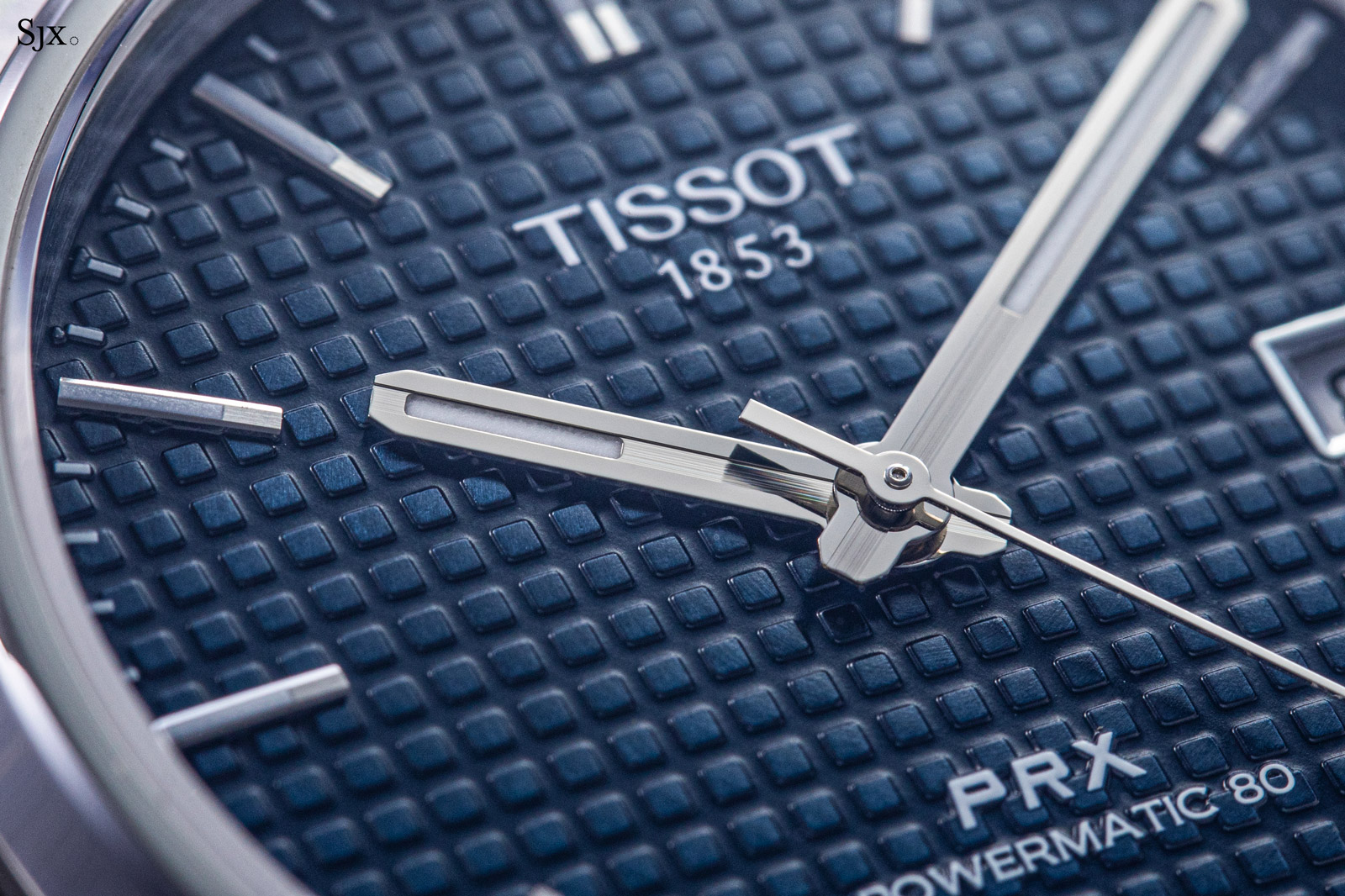
The dial has a good number of elements – patterned surface, applied markers, framed date – but all are executed economically, as would be expected.
Up close the dial reveals the budget nature of the watch. Almost all the elements have edges that are soft and rounded, as opposed to sharp and defined.
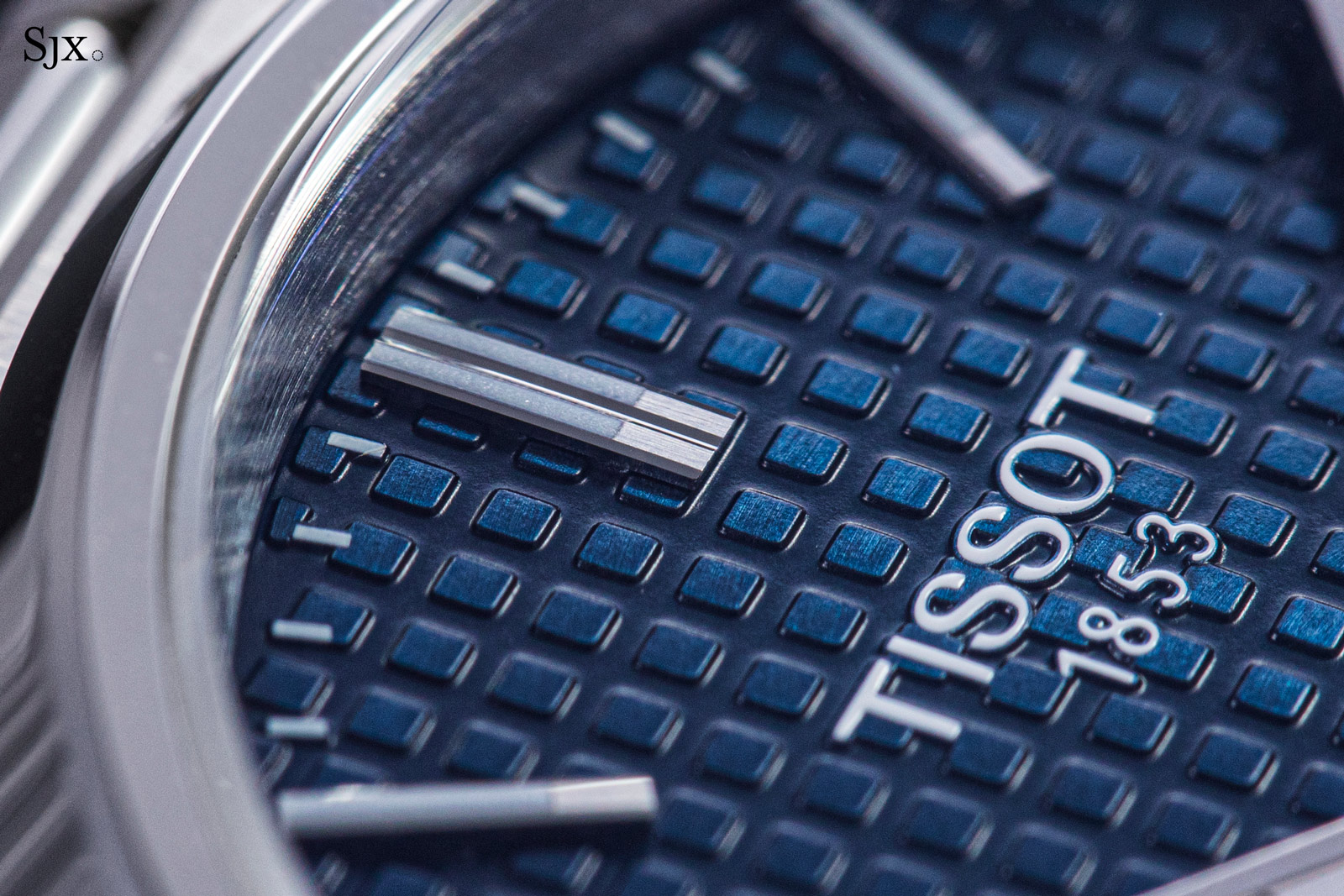
The chequerboard pattern is stamped, as is the lettering on the dial, making it a simple, one-step process
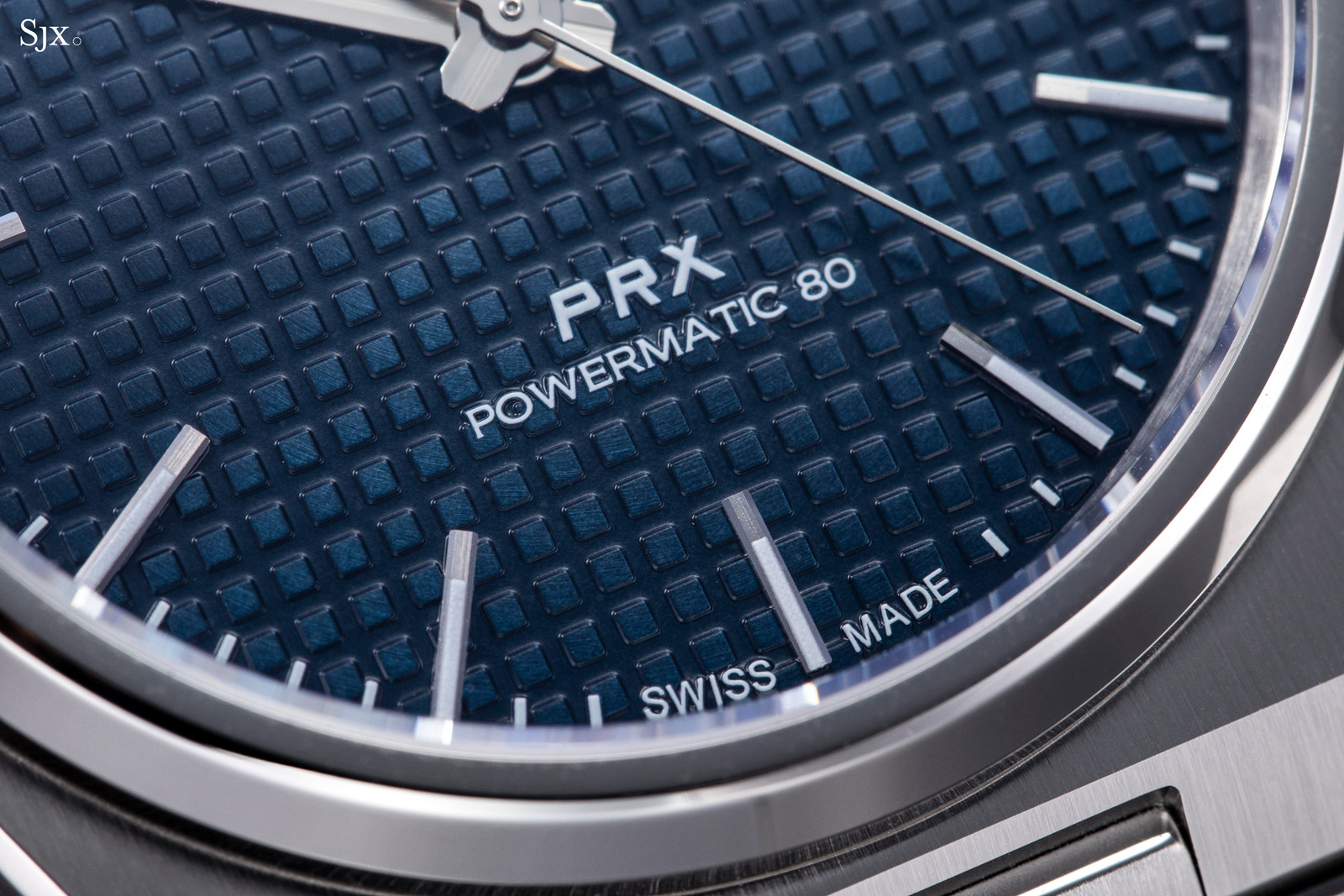
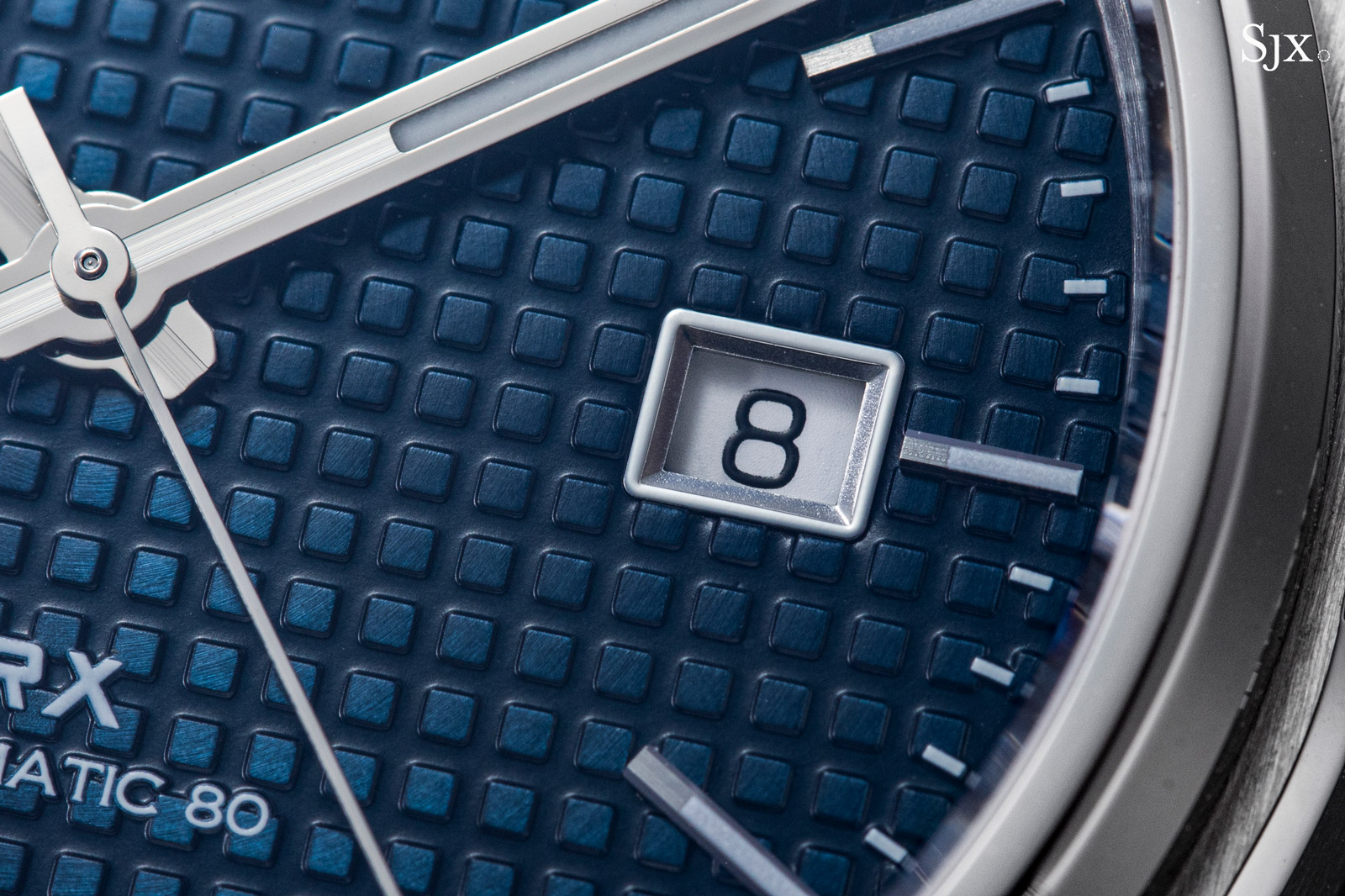
The soft edges are most obvious for the date frame
And one last detail worth commenting on is the seconds hand – it feels a bit too thin compared to the hour and minute hands.
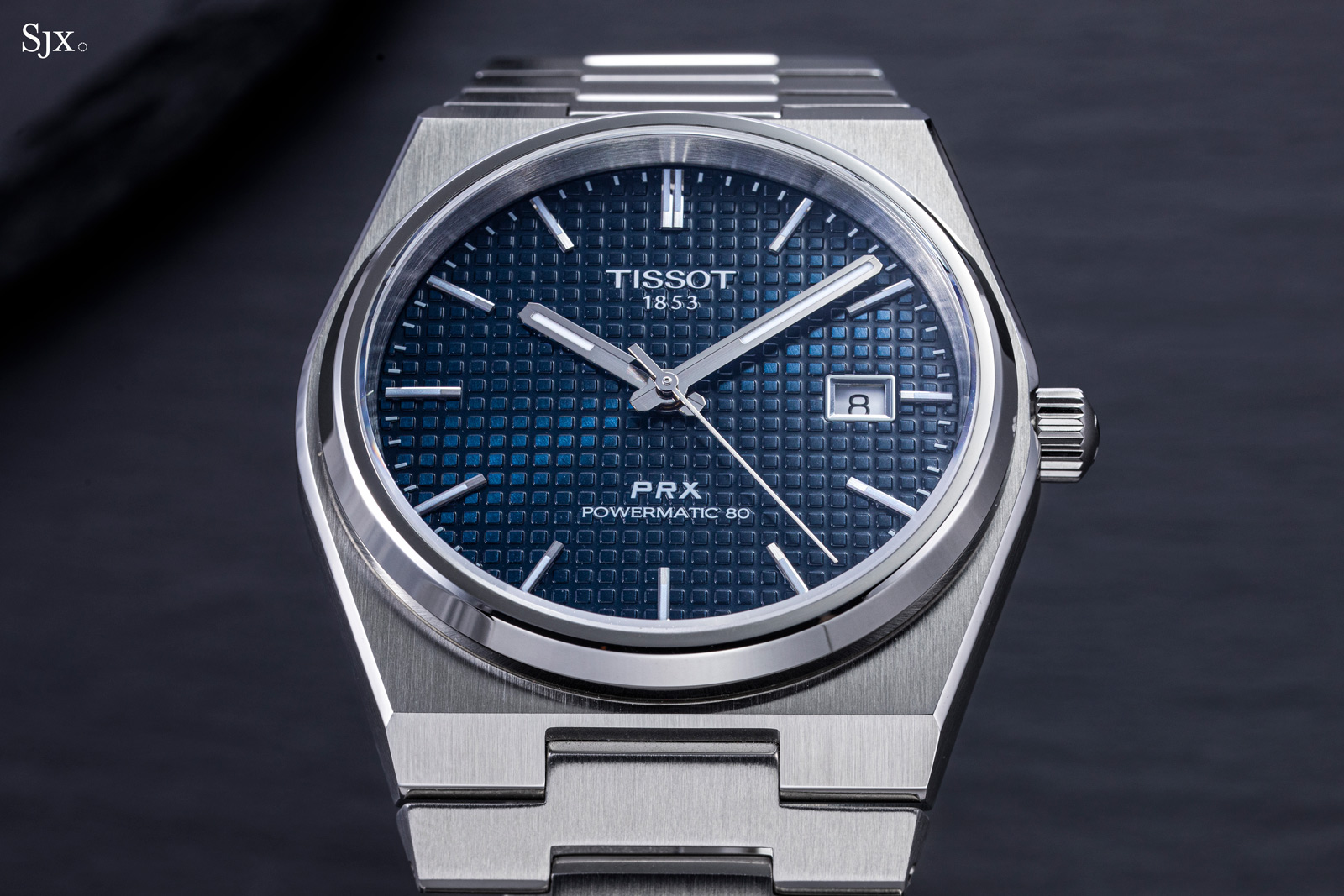
ETA power
While the design of the PRX is its biggest selling point, its best tangible feature is the Powermatic 80.111 inside. While not much to look at, the calibre offers good performance and technology for the price.
The movement exemplifies the tremendous manufacturing capability, particularly for mass-produced, entry-level movements, possessed by the Swatch Group, the parent company of Tissot that also owns ETA, Switzerland’s biggest movement maker.
Despite being an economical movement, it still manages features like an 80-hour power reserve, a Nivachron hairspring, and an impressive but unspecified level of magnetism resistance.
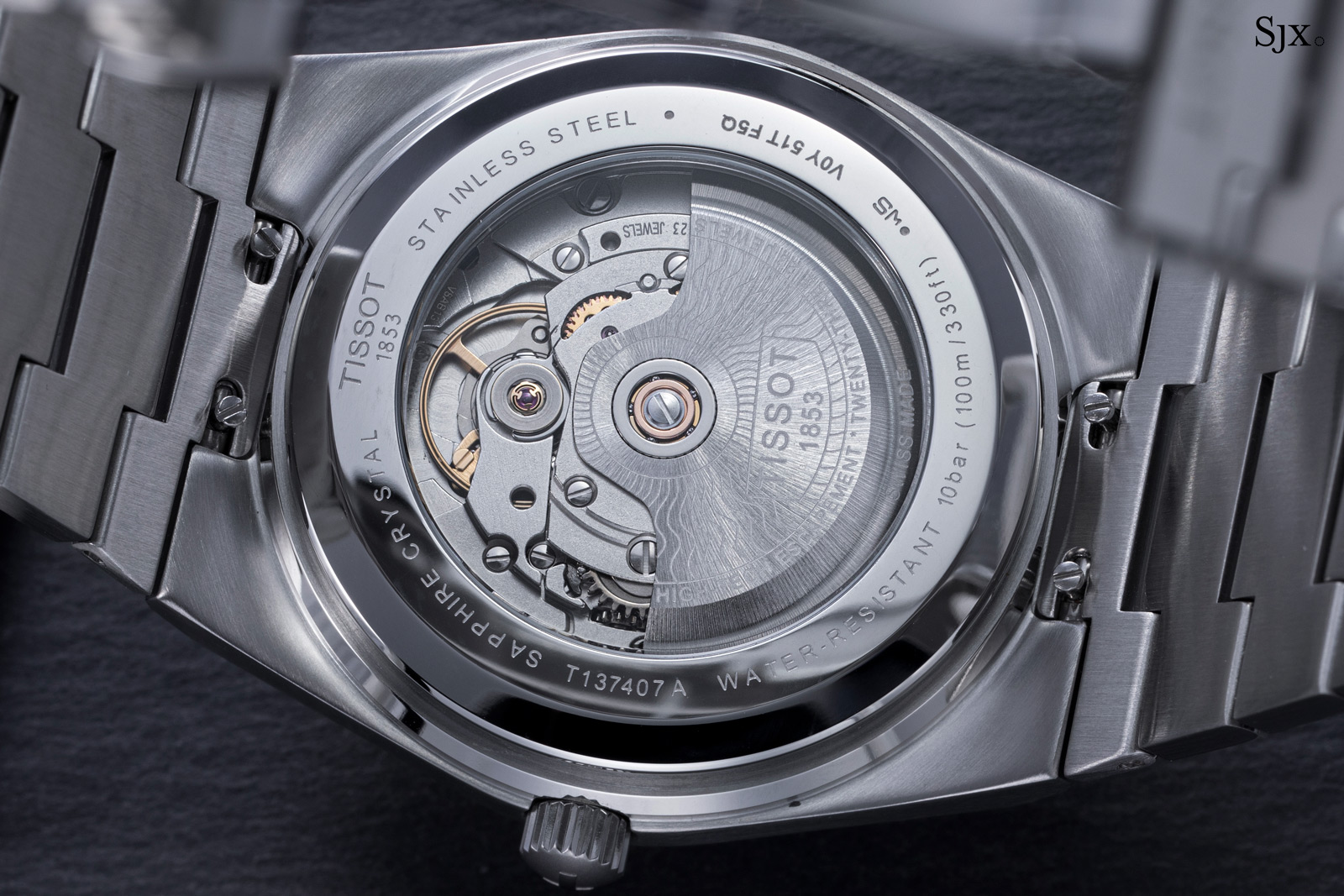
Needless to say, the Powermatic 80.111 is actually an ETA movement, the C07.111. While derived from the ETA 2824, a decades-old workhorse, the C07 family of movements is heavily modified. It’s been optimised for automated mass production, while being upgraded to improve functionality for the wearer.
The C07 is used by other brands owned by the Swatch Group, including Hamilton and Rado, while the Sistem51 movement of Swatch (the watch brand rather than the group) is essentially a simplified, low-cost version of the C07. And higher-end variants of the C07 also exist, such as the Powermatic 80.811 in the Tissot Ballade that features a silicon hairspring.
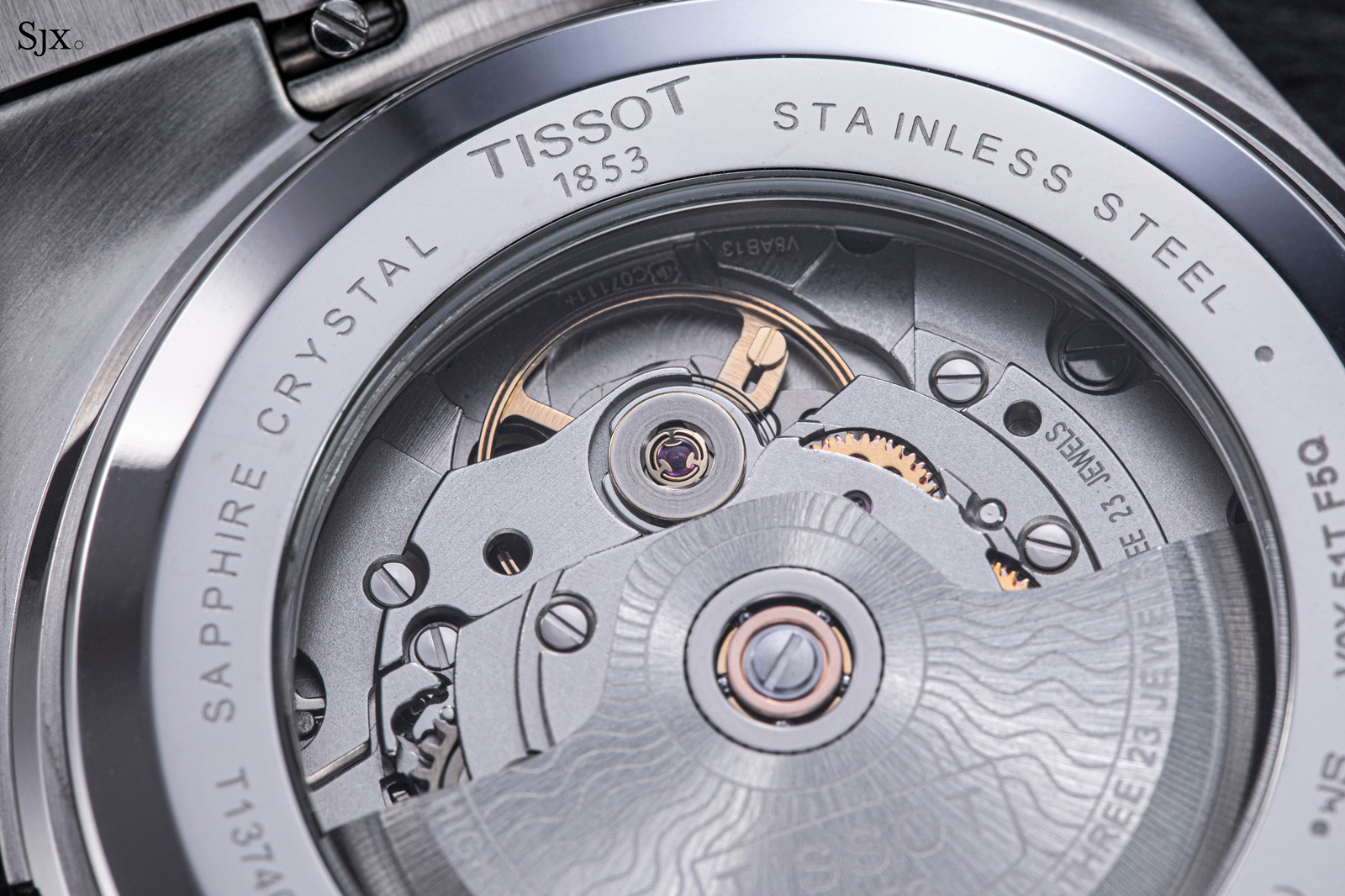
The ETA logo and calibre designation is visible just above the rim of the balance wheel
The Powermatic 80.111 isn’t pretty, which is fair enough given the price of the watch. Considering that, a solid case back would have been more attractive. The open back, however, does reveal some of the notable features of the movement, including the free-sprung balance.
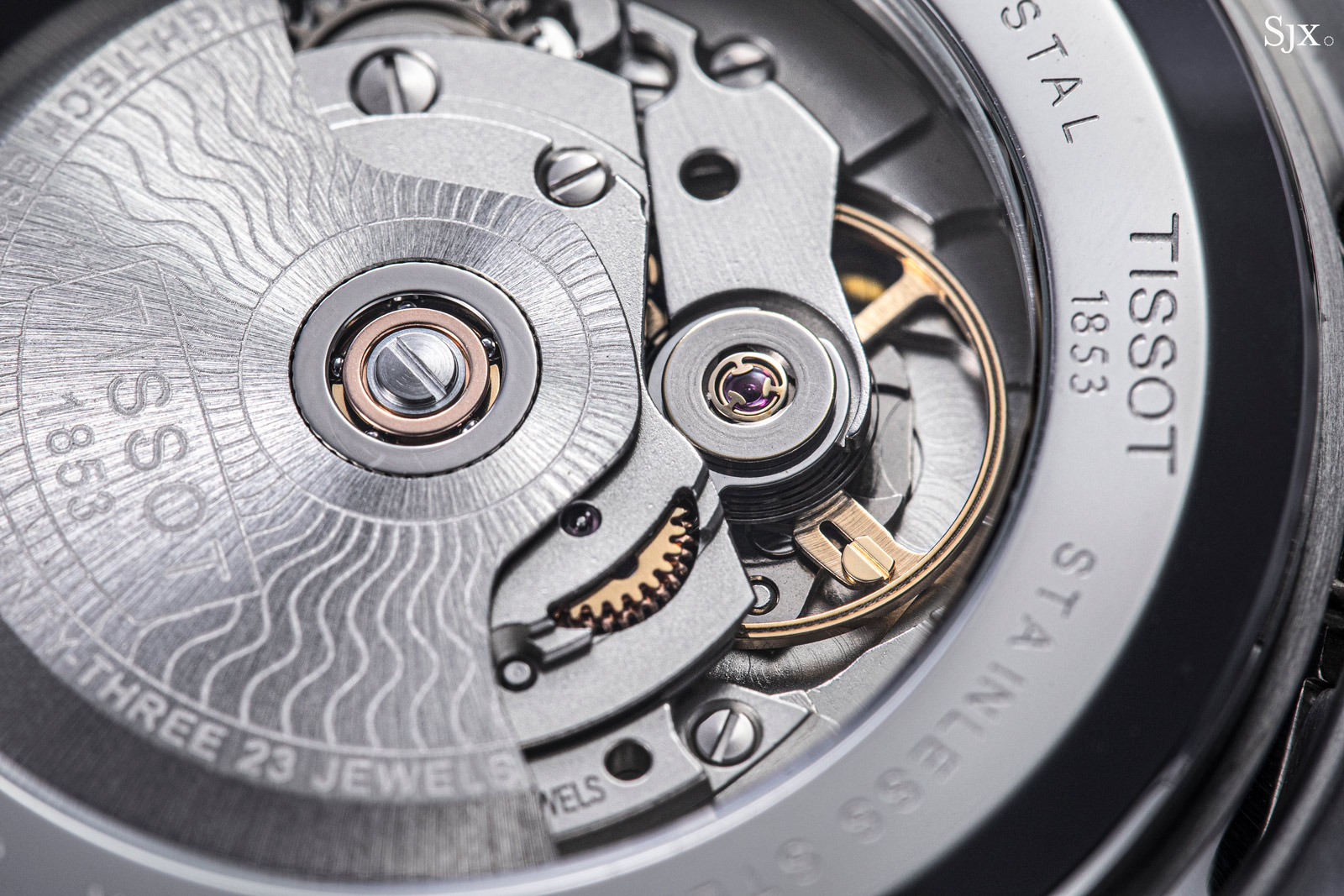
One of the regulating weights is visible on the slotted arm of the balance
Typically found on movements in pricey watches, a free-sprung balance wheel does away with the regulator index and instead relies on weights on its rim for regulation. Such a set up tends to be more stable over time. The Powermatic 80.111 (and other C07-based movements) has twin regulating weights that almost certainly set in place via computerised process during production for near-perfect regulation.
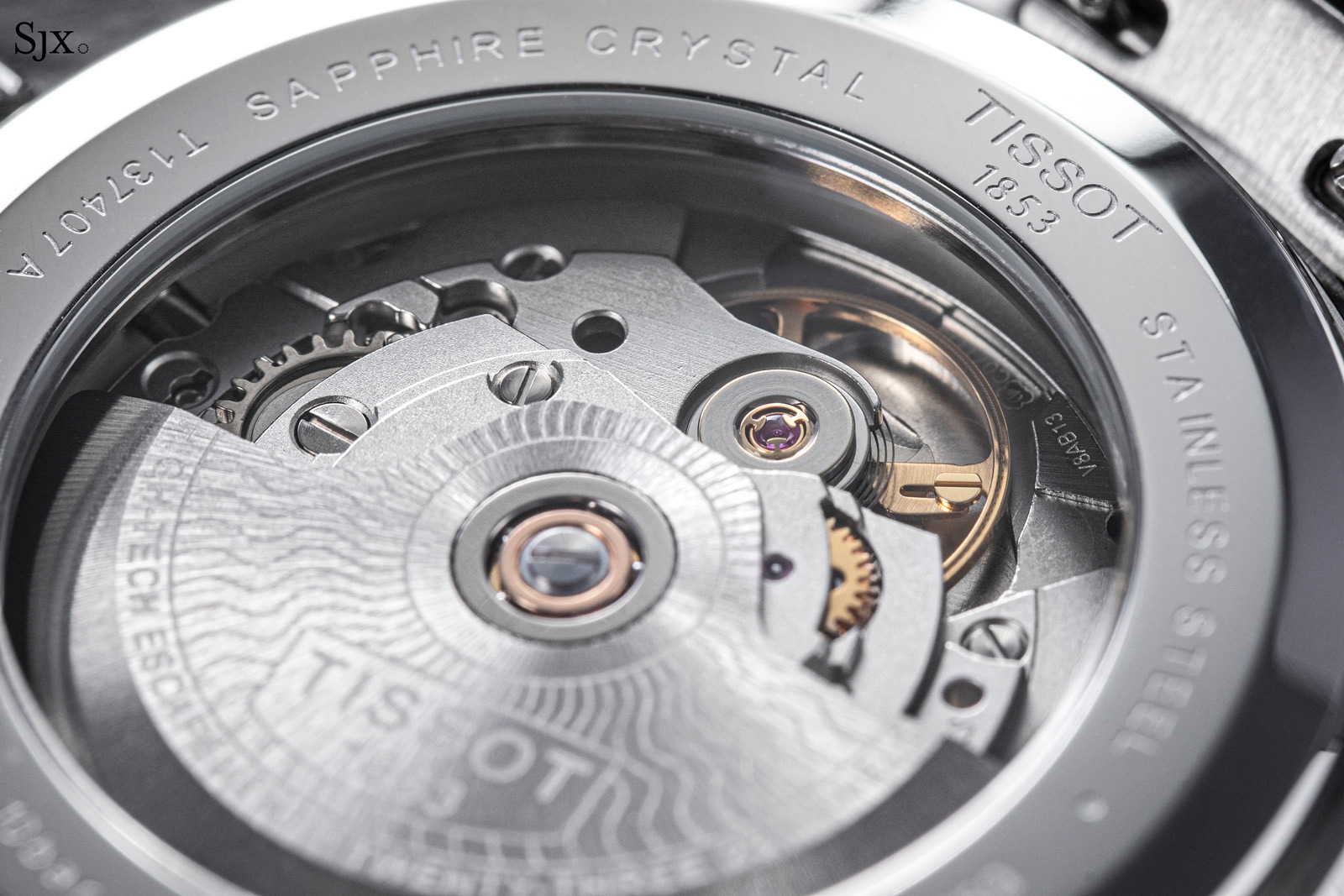
Another useful feature is the synthetic escapement – the pallet lever and escape wheel are made of a polymer, making them impervious to magnetism.
That’s further enhanced by the Nivachron hairspring, which is made of a proprietary alloy developed by the Swatch Group together with Audemars Piguet. The material improves timekeeping stability by reducing variations due to temperature. More importantly, the alloy reduces the hairspring’s sensitivity to magnetic fields by a factor of 10-20 according to Swatch Group.
That said, Tissot doesn’t specify the exact level of magnetism resistance of the Powermatic 80, though it is most likely considerable and well above that of the competition. The lack of specifics is presumably because its sister company Omega markets a high level of magnetism resistance as one of its key qualities – at a substantially higher price point.
As for decoration, there isn’t any to speak of, save for the rotor customised for Tissot. Nonetheless, the movement has to be admired for minimising cost while optimising performance.
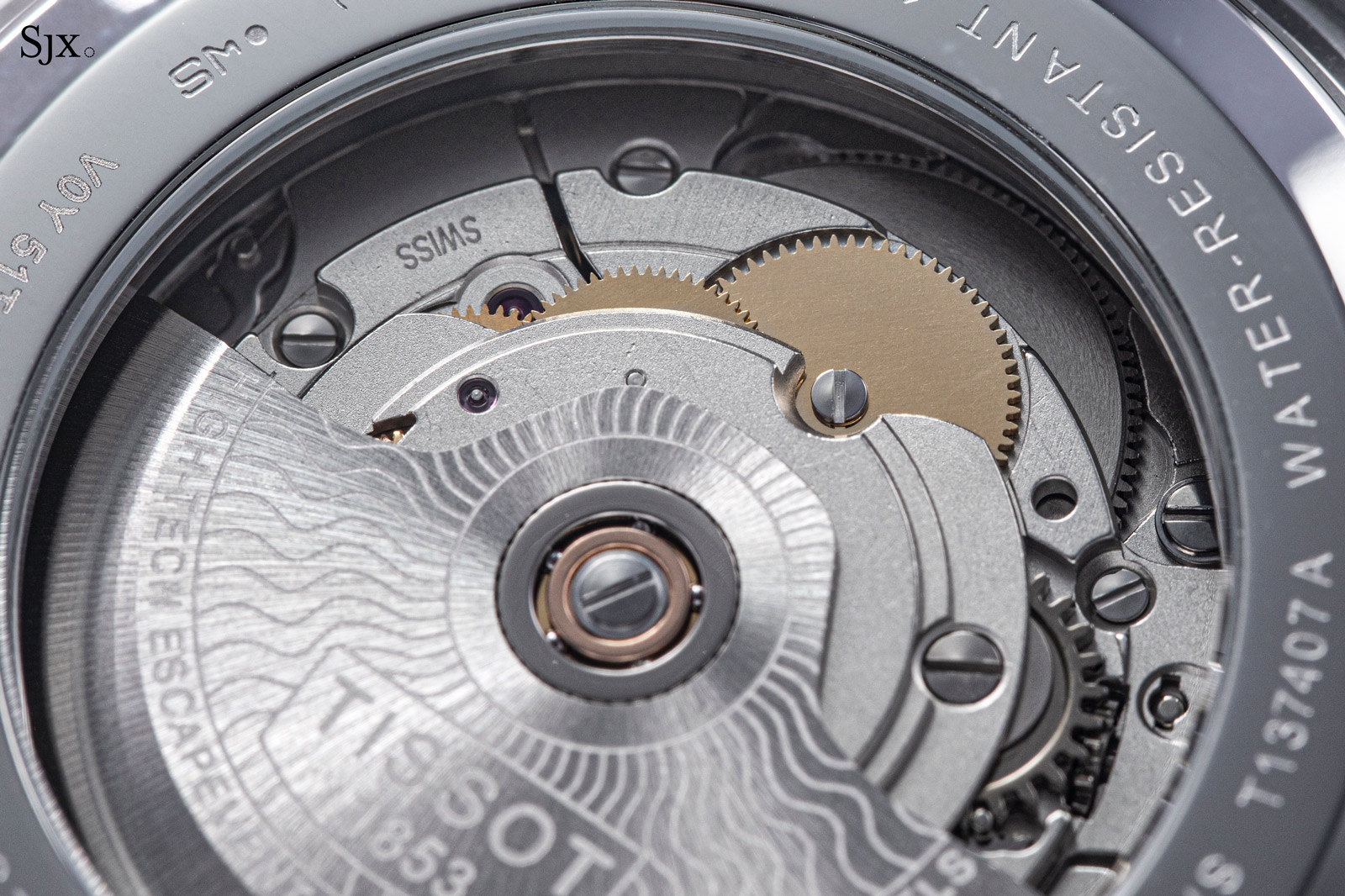
The engraving around the case back isn’t attractive, especially with its poor kerning
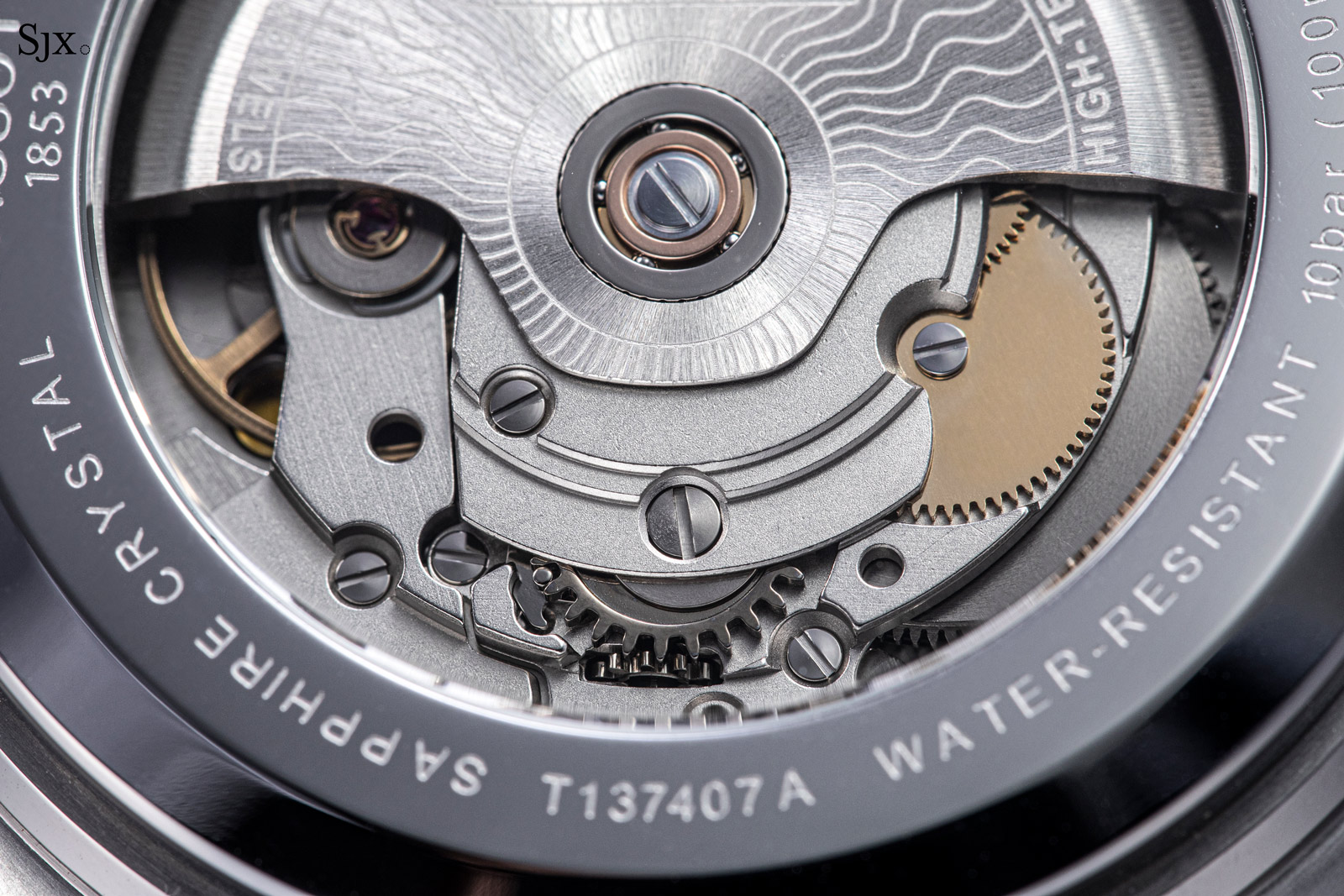
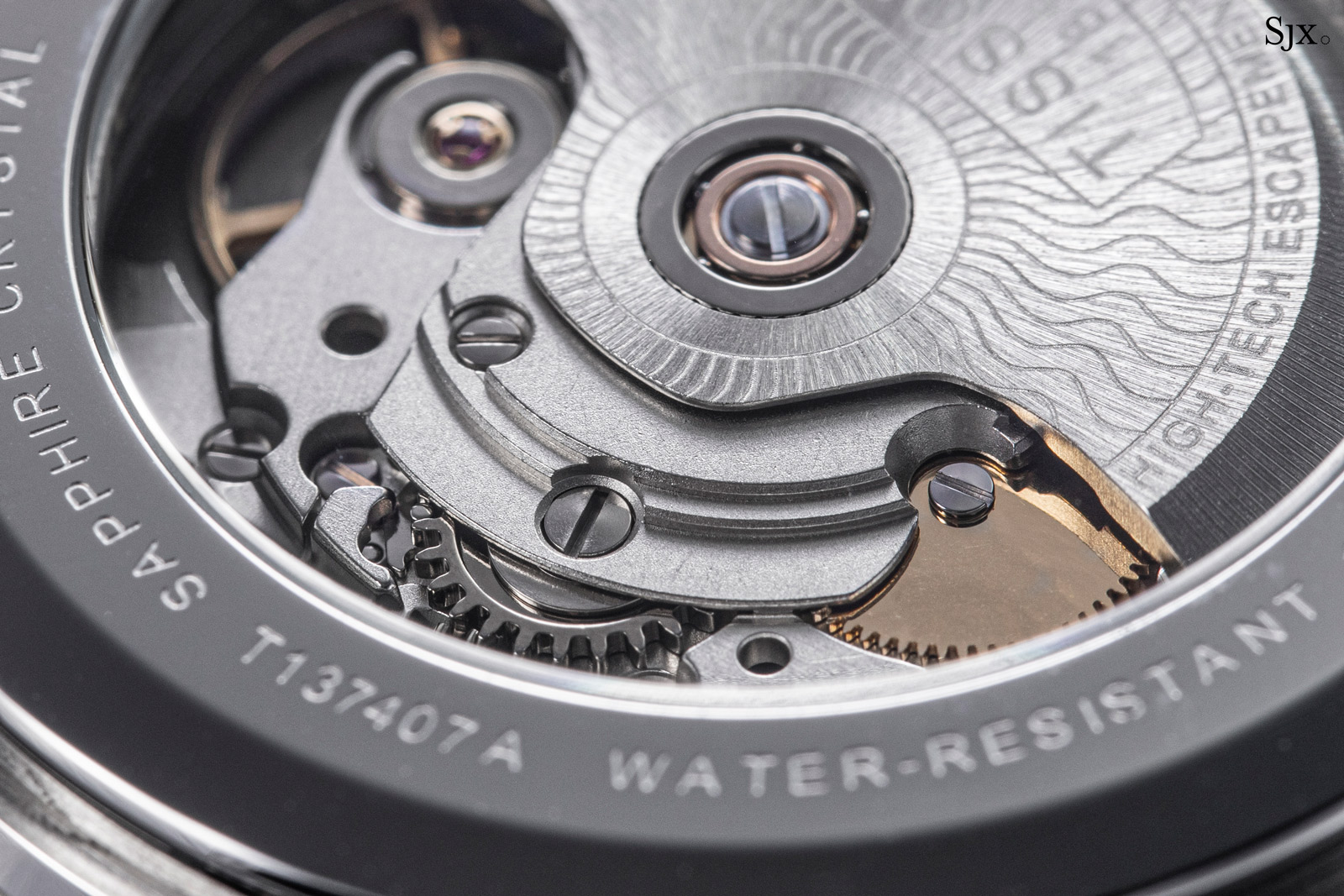
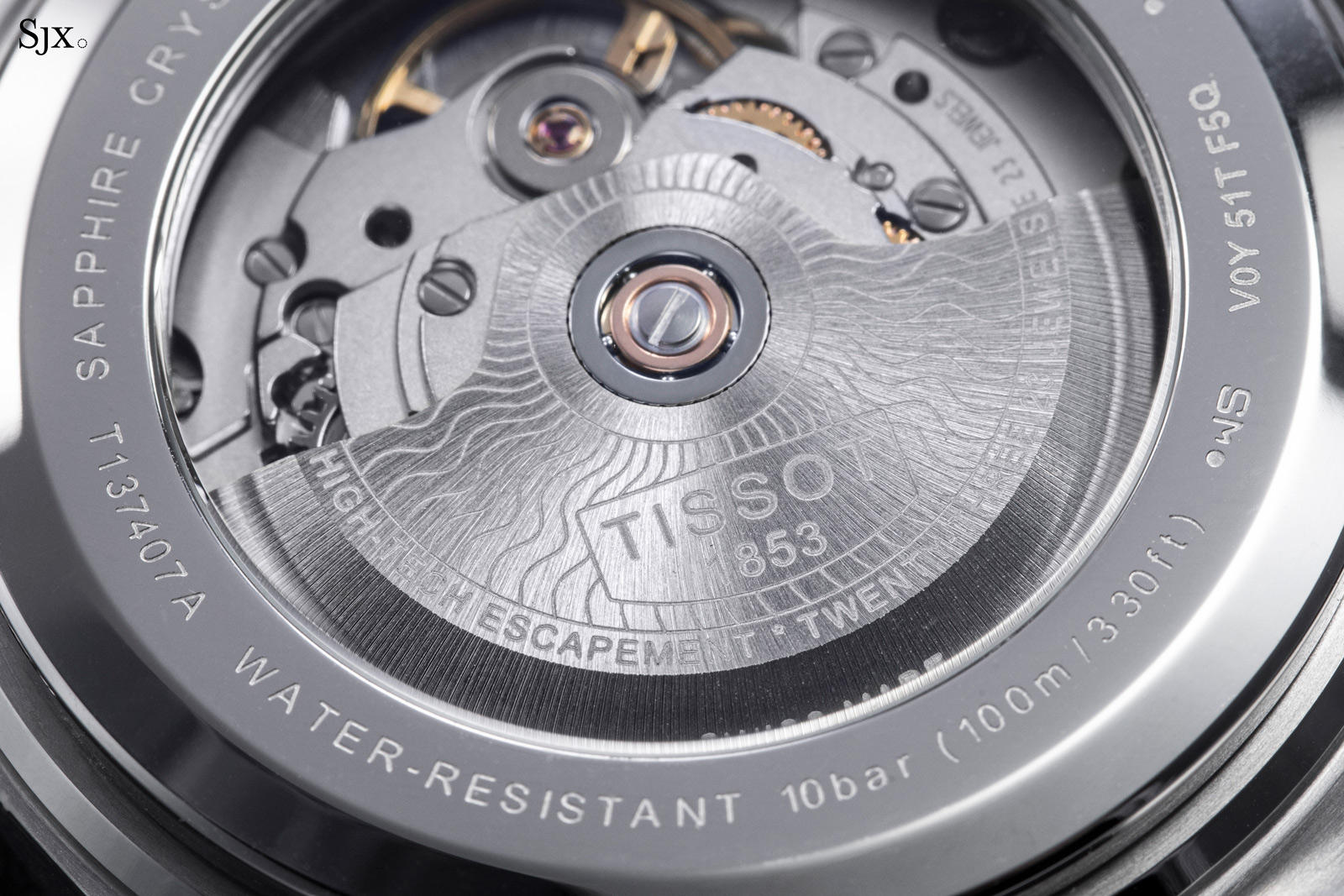
Concluding thoughts
The PRX smartly focuses on just doing few things right. Design-wise nothing much was changed from the vintage Seastar, while the external details are simple enough to keep the price manageable, while having a handful of details that help it stand out. And then there’s the low-cost but high-tech movement.
It’s unquestionably a value proposition at US$600, but the PRX is also evidently a US$600 watch. Put simply, the PRX doesn’t look more expensive than it is, but it does look good for what it costs.
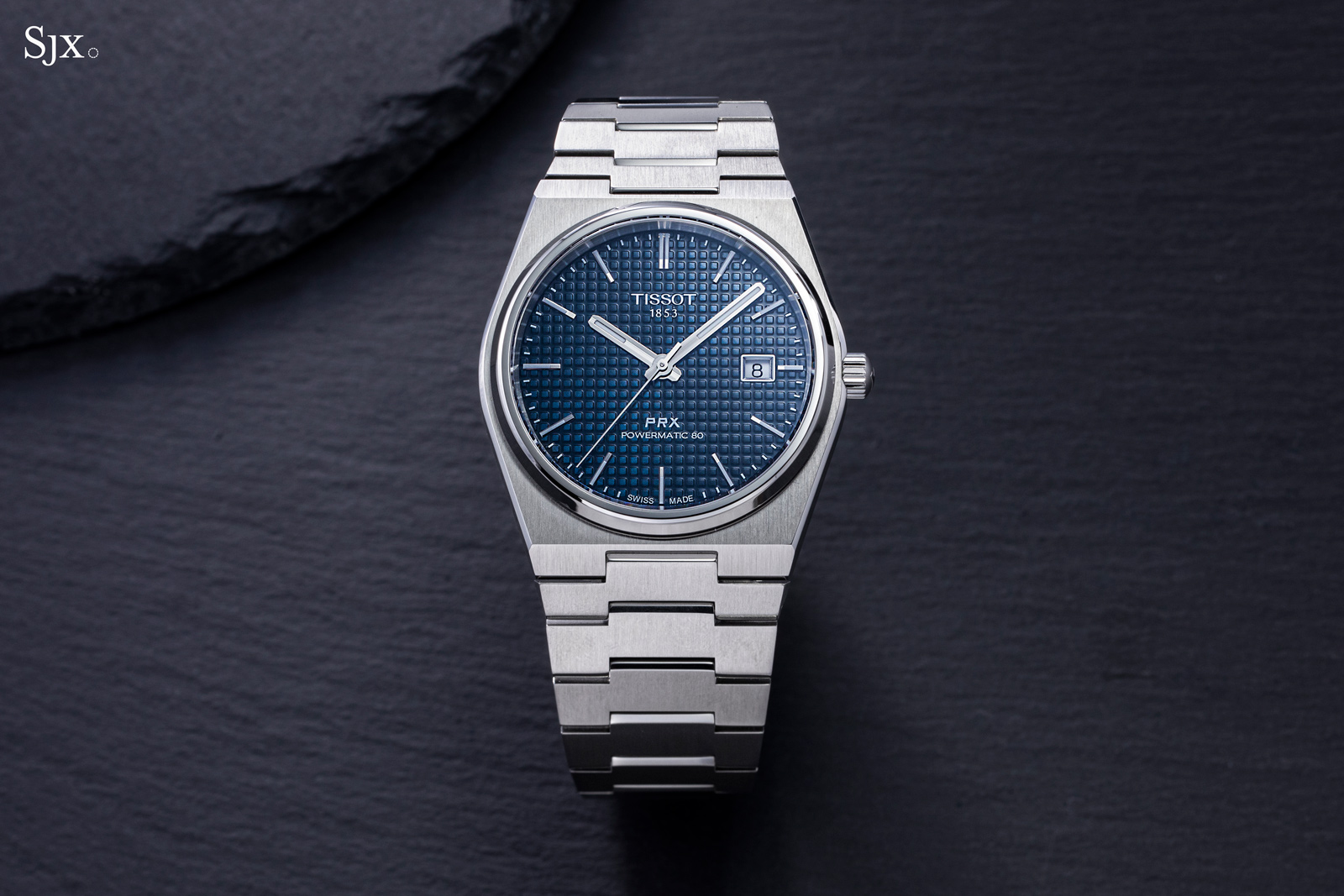
Key facts and price
Tissot PRX Powermatic 80
Ref. T137.407.11.051.00 (black dial)
Ref. T137.407.11.041.00 (blue dial)
Ref. T1374072103100 (silver dial, gold-plated bezel)
Diameter: 40 mm
Height: 10.9 mm
Material: Steel
Crystal: Sapphire
Water resistance: 100 m
Movement: Powermatic 80.111
Functions: Hours, minutes, seconds, and date
Frequency: 21,600 beats per hour (3 Hz)
Winding: Automatic
Power reserve: 80 hours
Strap: Steel bracelet
Availability: Now at boutiques and retailers
Price: US$650 in steel, US$675 with gold-plated bezel (950 and 990 Singapore dollars respectively)
For more, visit Tissotwatches.com.
Correction December 13, 2021: The Powermatic 80.111 does not have a silicon hairspring, instead it is made of Nivachron.
Back to top.
